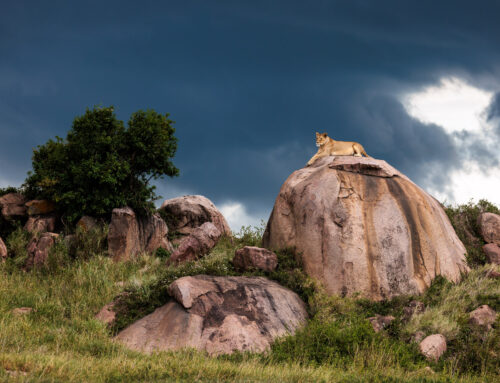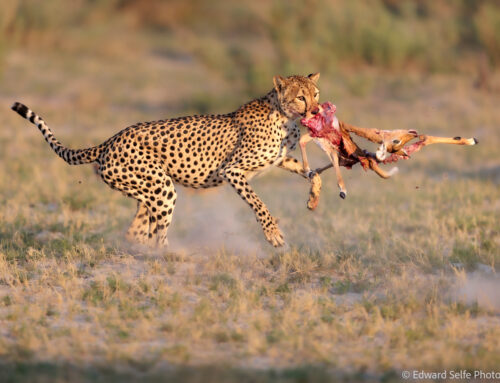In June 2023, I ran a recce trip to Uganda to scout for a couple of photo safaris that I am running to that wonderful country in 2024. On the way home, I spent a week in Ethiopia’s central area, visiting 3 areas in the Afar and Oromia regions. The purpose of my visit was to see more of this diverse continent and to assess whether Ethiopia is suitable for future photographic tourism trips.
I landed late in the evening at Addis Ababa airport, high on Ethiopia’s central plateau. After the humidity and dampness of the Ugandan rainforests, it felt cold and refreshing. I’ve divided my report into the three areas which I visited and, as usual, added captions to the photos.
Awash Valley, Afar Region
We drove SE out of Addis to Adama, and then on to Awash town. It was increasingly hot and dry as we descended from the plateau around Addis to the lowlands of the Afar region. The way of life changed dramatically too, with arable fields giving way to pastoralism. Camels, goats and hardy sheep fed alongside the road and the few remaining water sources thronged with livestock and birds.
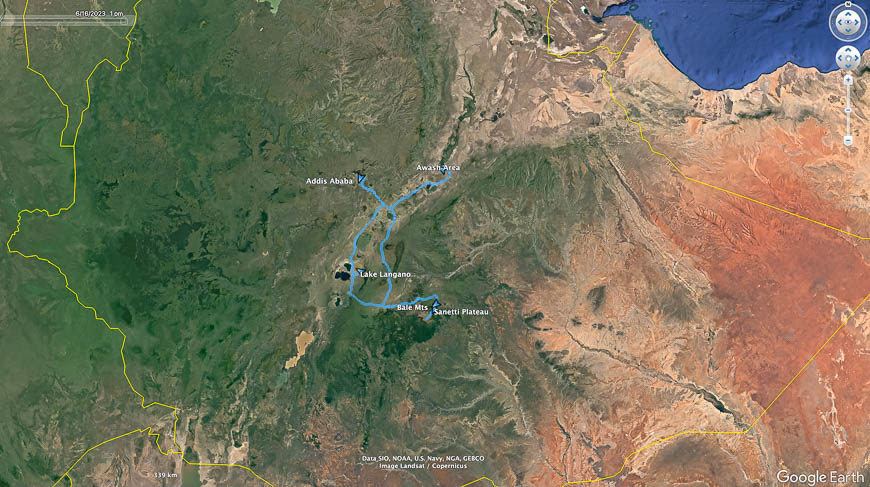

Breakfast on my first morning was local fare, including injera, the fermented pancake made from tef flour.
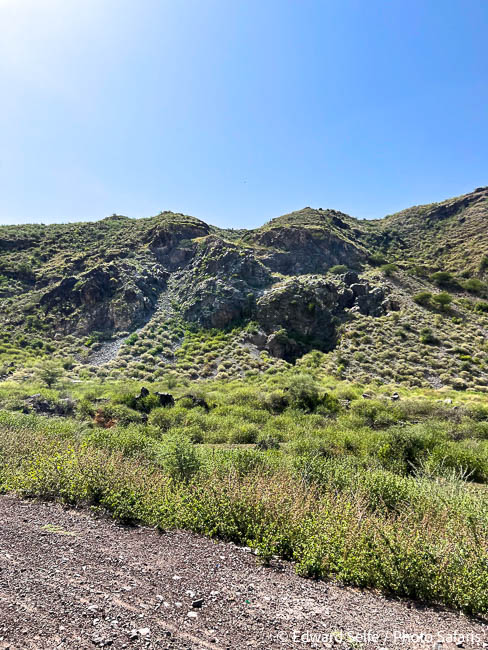
Igneous rock protrusions form the landscape in the areas around Lake Nogoba…
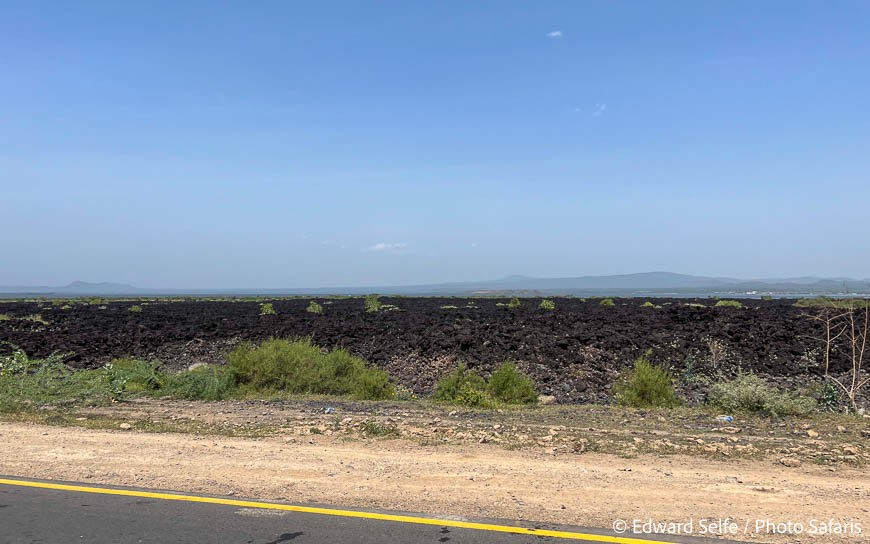
…with Lava fields running down to the lake.
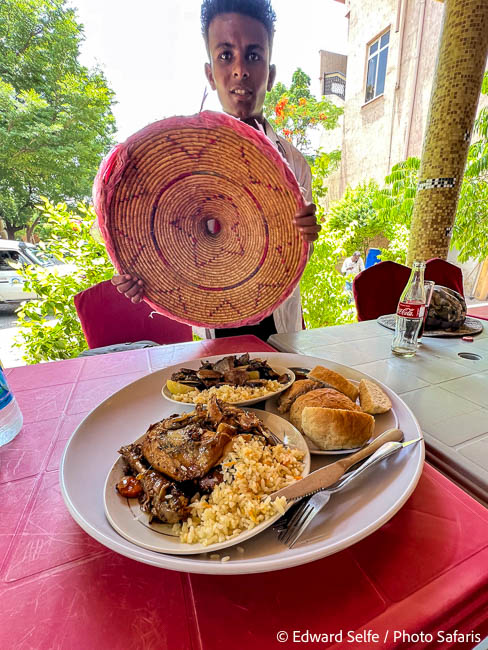
Lunch in Afar regions consists of rice, goat or sheep meat and fresh bread.
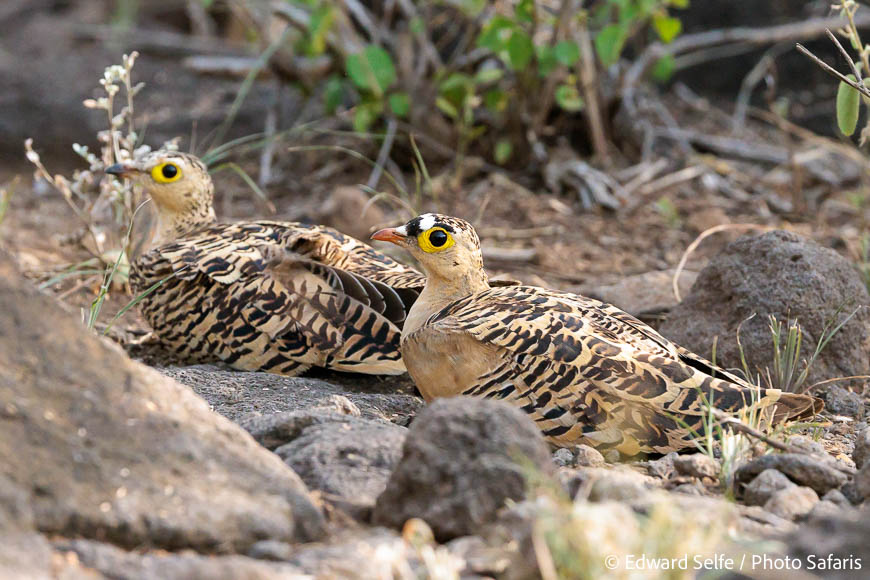
We stayed at Doho Lodge on edge of a natural spring. The water, and the surrounding air temperatures were extremely hot! Our first afternoon walk gave us Lichtenstein’s Sandgrouse…
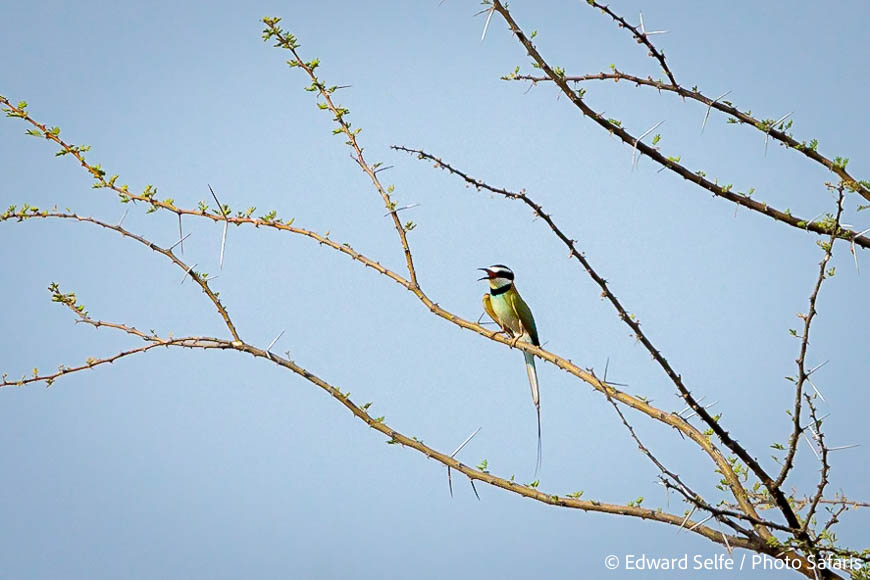
…White-throated Bee-eaters….
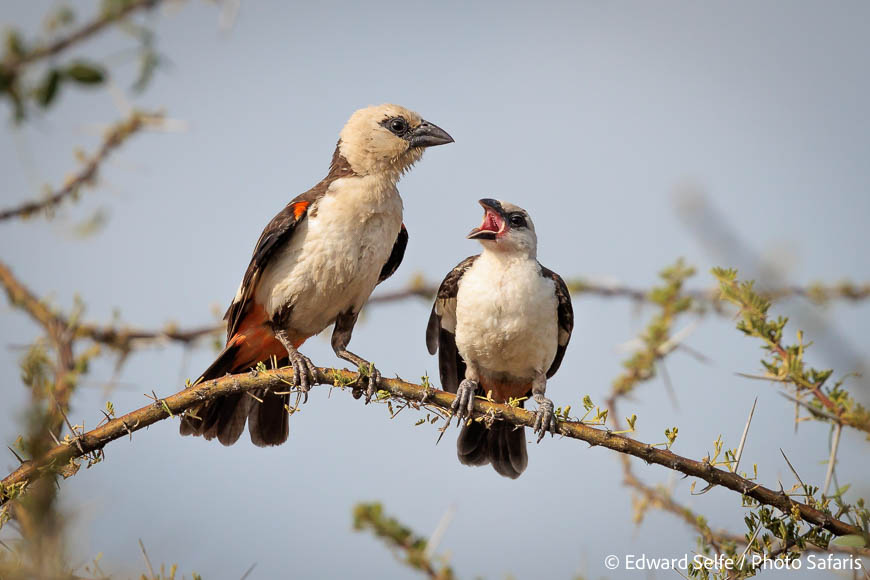
..White-headed Buffalo-weavers…..
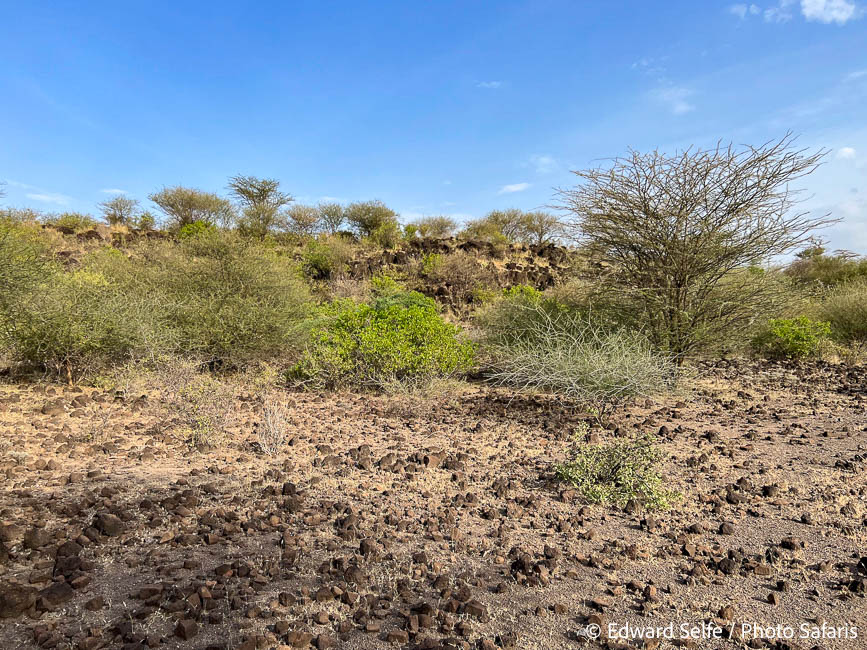
…and interesting scenery. The birds are totally habituated to people since they have never been hunted which allows very close up viewing.
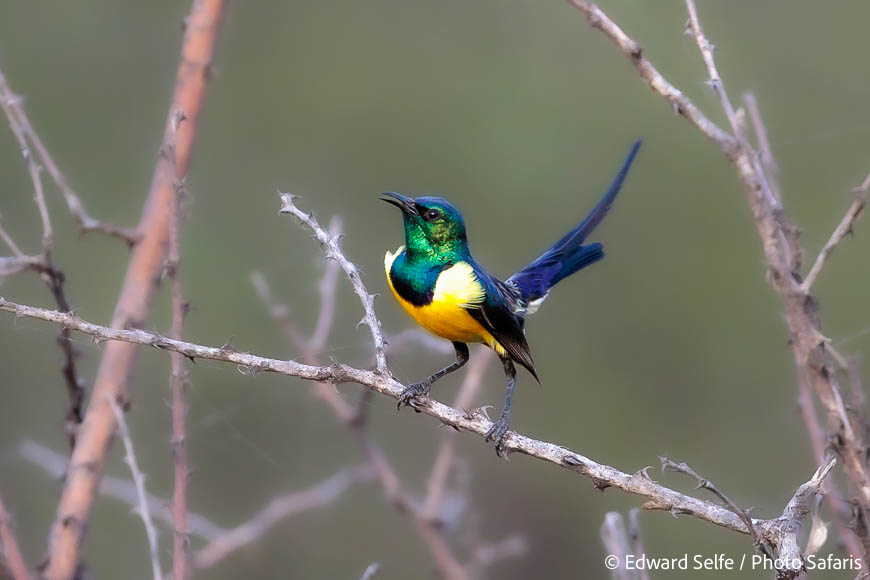
First big special was this Nile Valley Sunbird displaying beautifully.
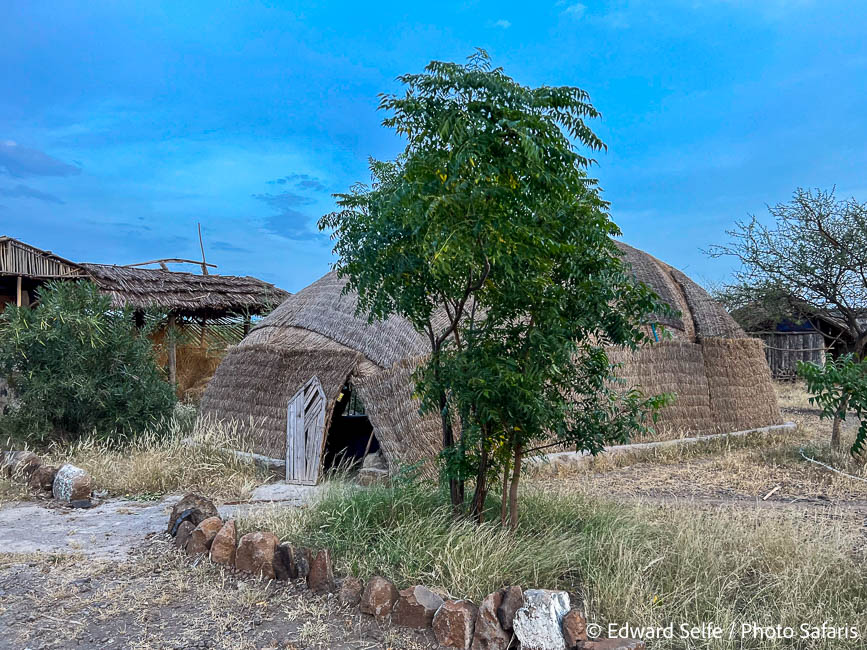
We left early to go to Alledghi Nature Reserve the following morning. We passed traditional nomadic homesteads on the way. These mats covering these structures can be removed and carried on camels; the arch-shaped poles are left for the next use.
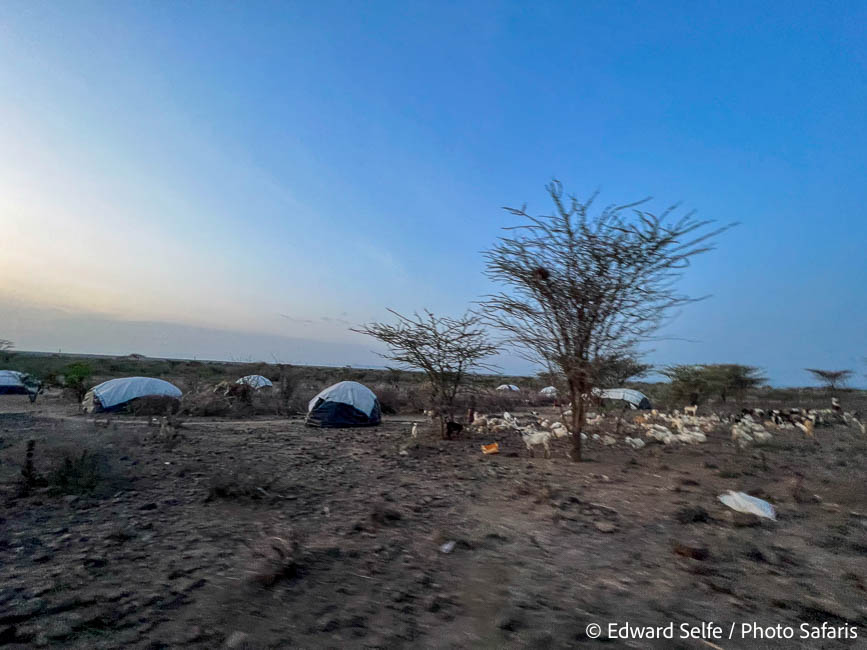
Sadly, the encroachment of an invasive shrub called Prosopis juliflora, introduced as a feed plant for cattle, is swamping native grasslands and forcing nomadic people to become more sedentary. This puts increasing pressure on the remaining grasslands.
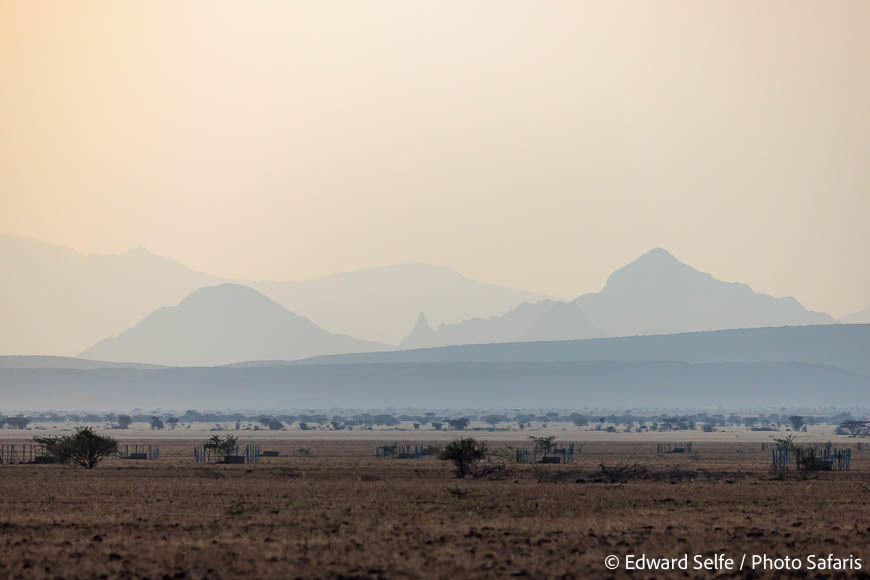
Striking scenery of Alledeghi NR with small geothermal investigative sites in the foreground.
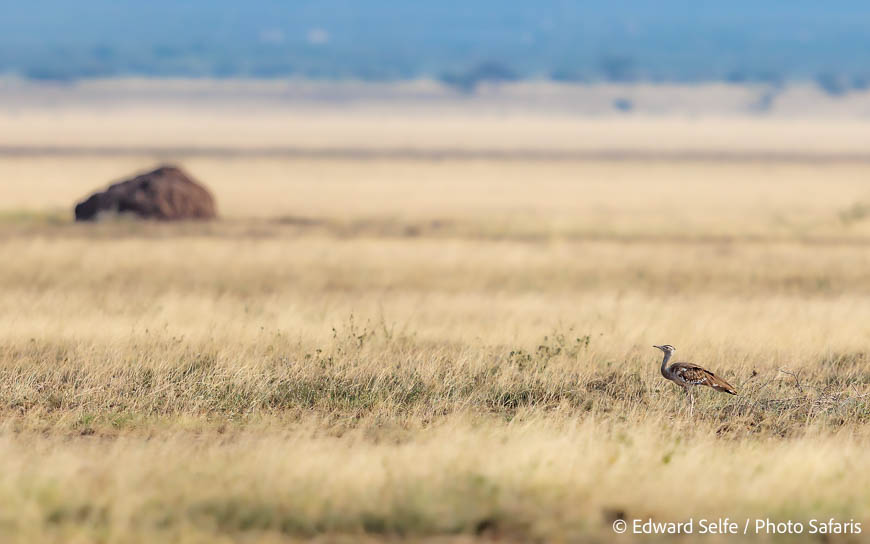
First sign of the relatively common Arabian Bustard on the plains.
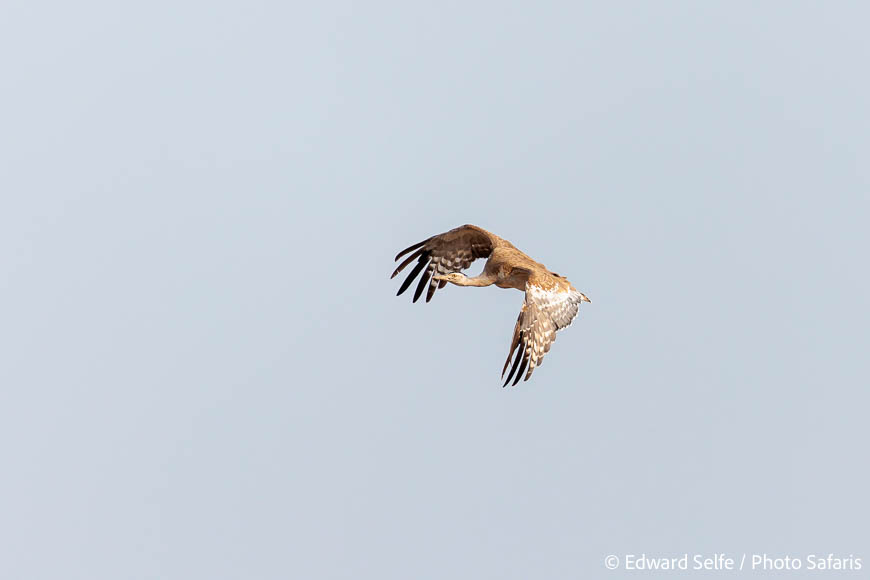
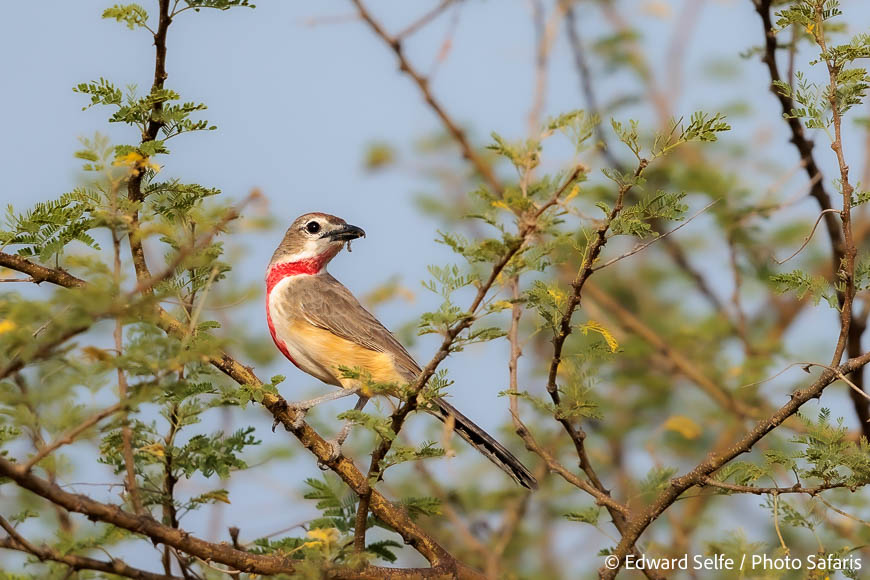
Beautiful Rosy-patched Bush-shrike.
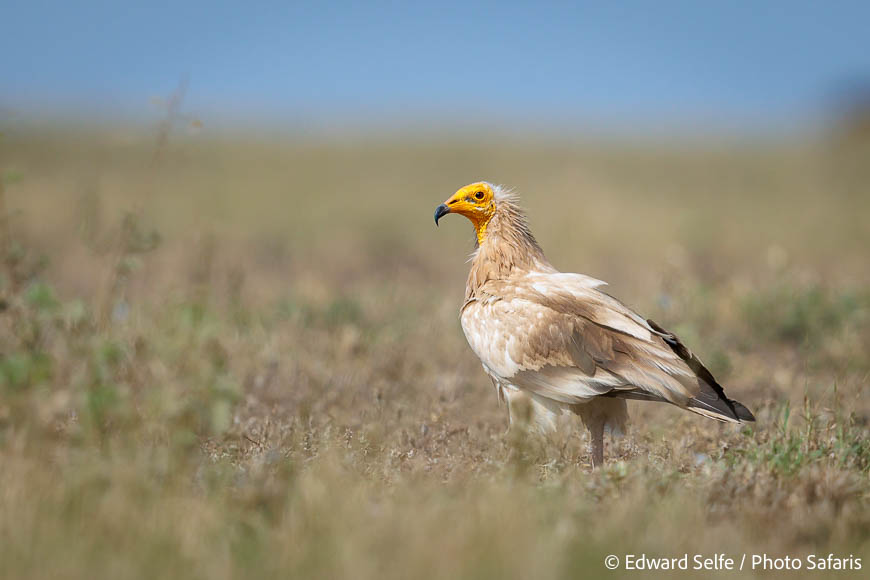
An Egyptian Vulture was feeding on a Soemmerring’s Gazelle carcass alongside Rüppells and Lappet-faced Vultures.
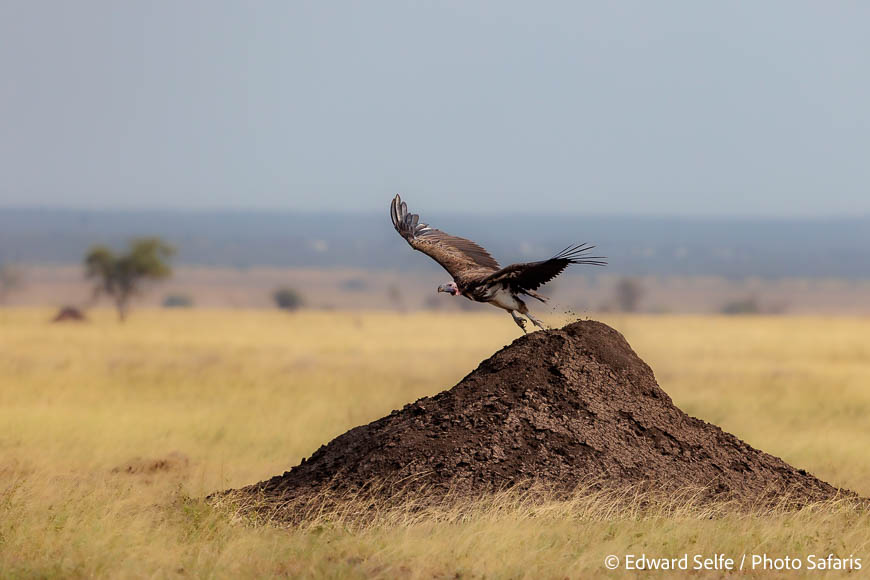
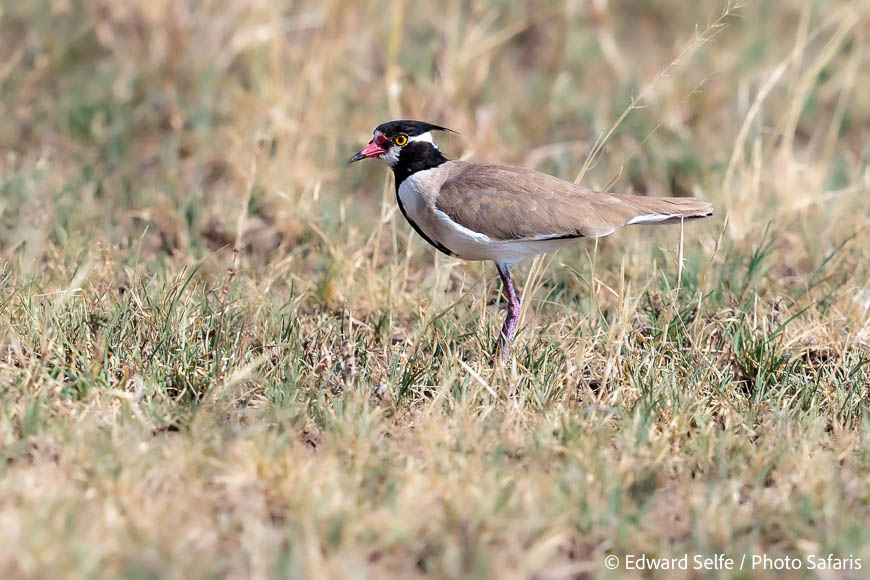
Black-headed Lapwings were numerous but somewhat shy always moving away as we came close. We saw many of them while we searched, unsuccessfully, for Double-banded Coursers in the dry plains.
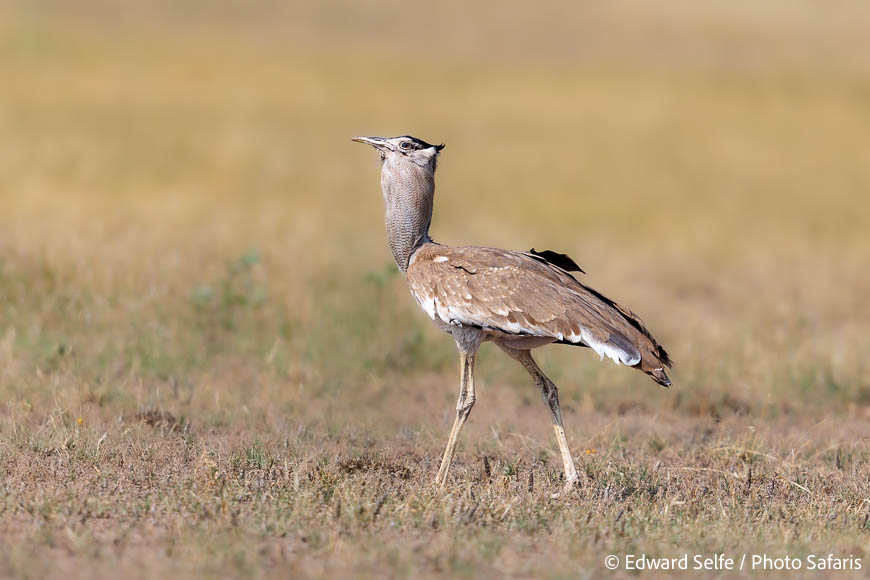
Superb Arabian Bustard.
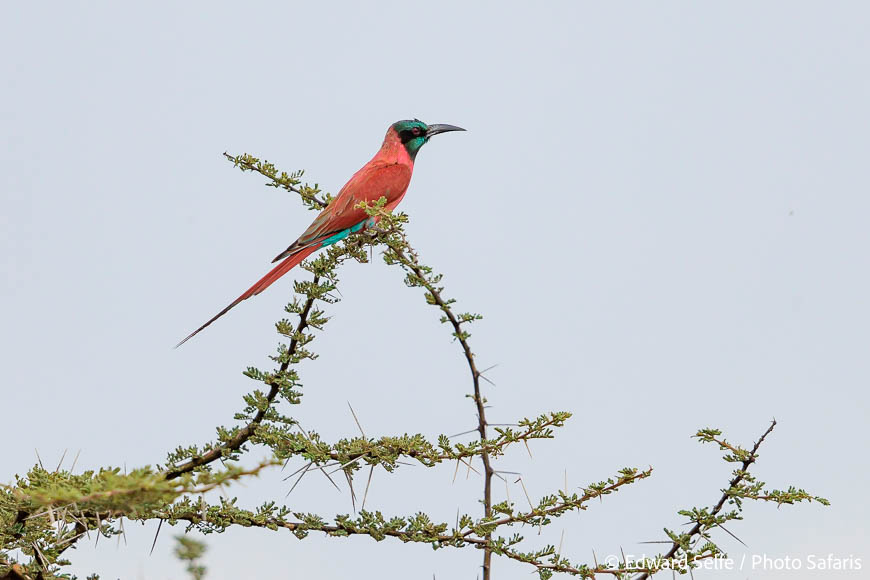
Northern Carmine Bee-eater in Awash National Park. Note the green forehead as well as the green throat compared to green throat only on the Southern Carmine Bee-eater.
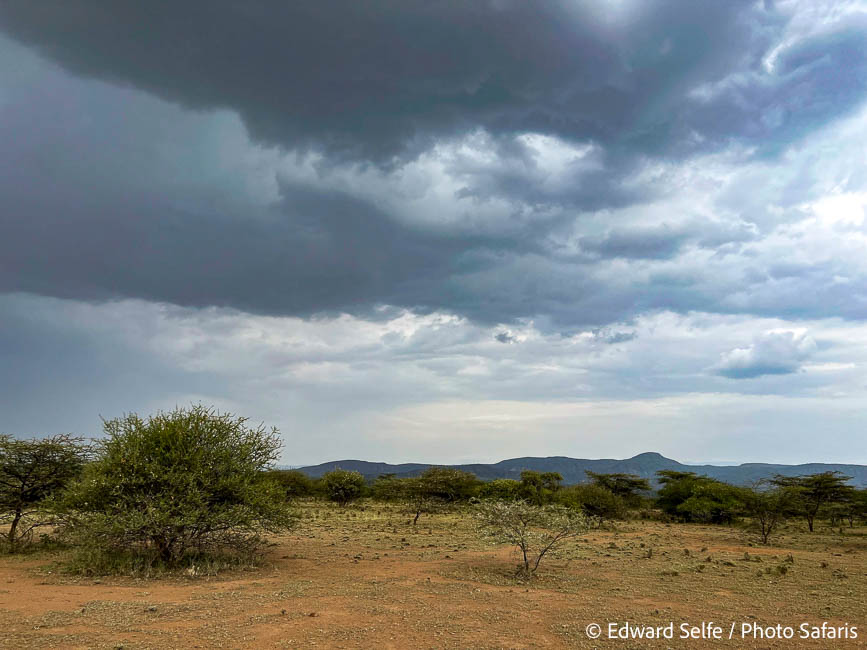
Storm brewing over Awash NP.
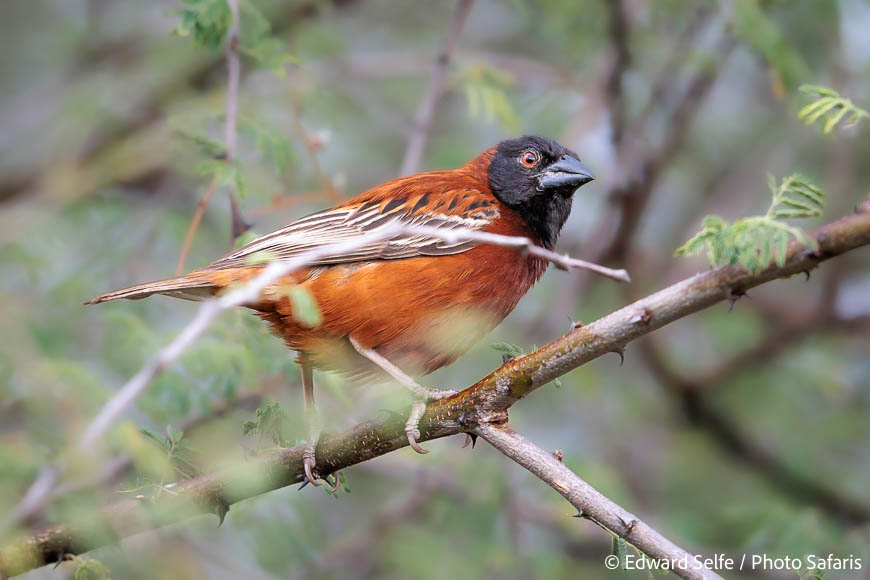
After the rain, a huge flock of Chestnut Weavers congregated along the roadside; it appears that they do this to search for a colony nesting site.
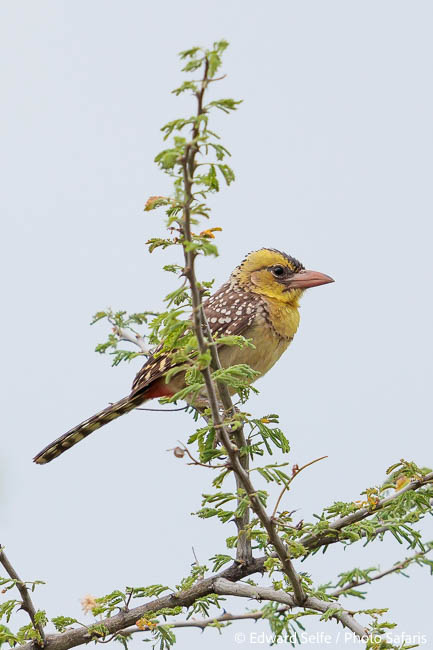
The Horn of Africa is home to a dazzling array of Barbets; they’re really interesting and charismatic birds so I was happy to see this Yellow-breasted Barbet so clearly.
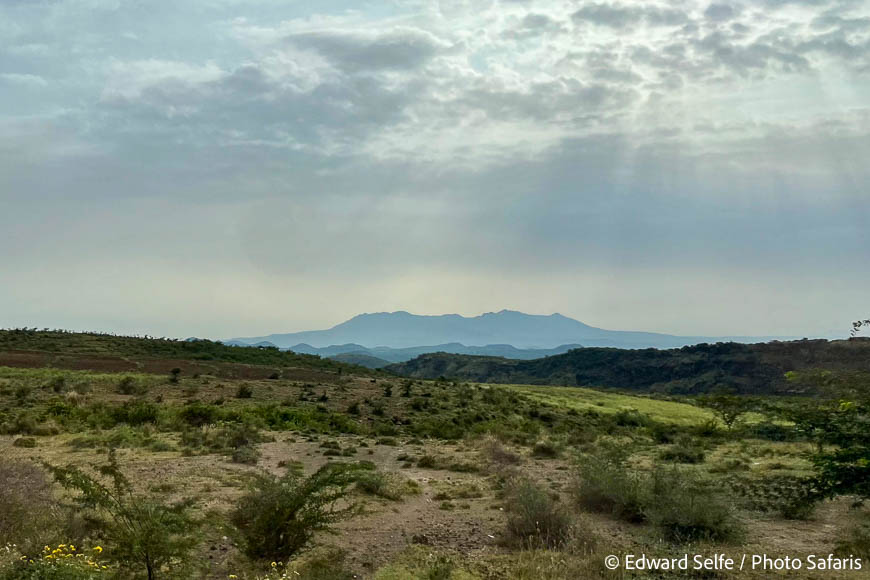
Leaving the dry country, we headed back to Adama and then south through the farmlands of Oromia…
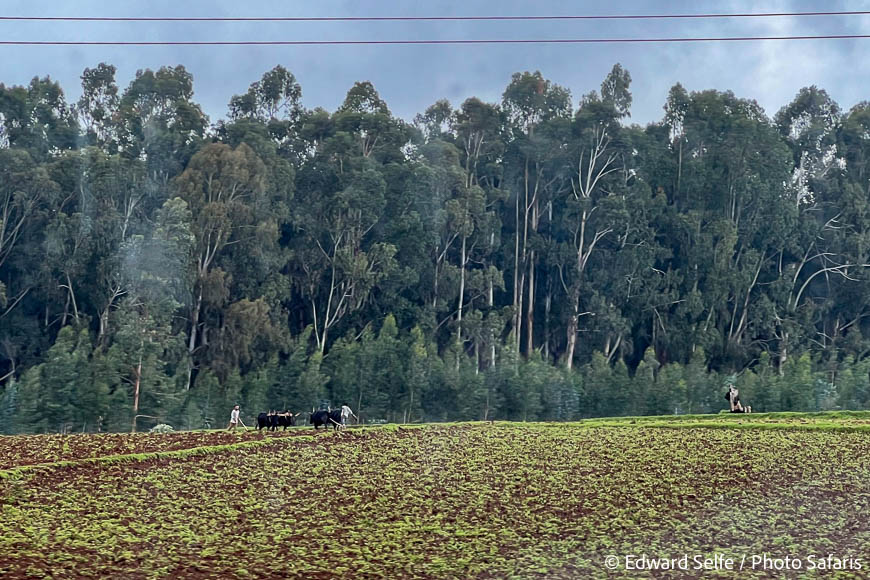
…across arable land at 3,700m asl where famous runners such as Eliud Kipchoge and Haile Gebrselassie trained for their celebrated achievements….
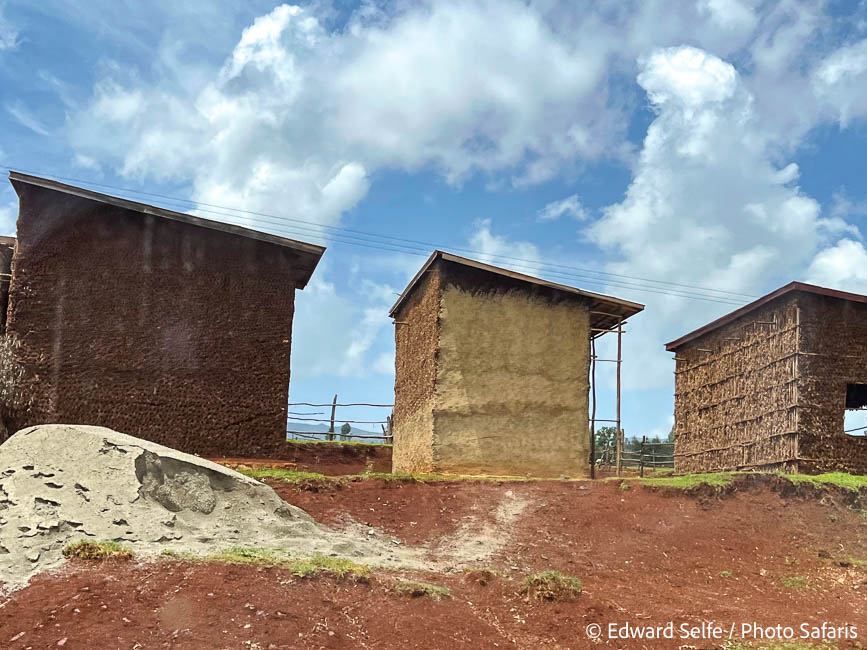
…and past timber-framed houses coated in mud and cattle droppings.
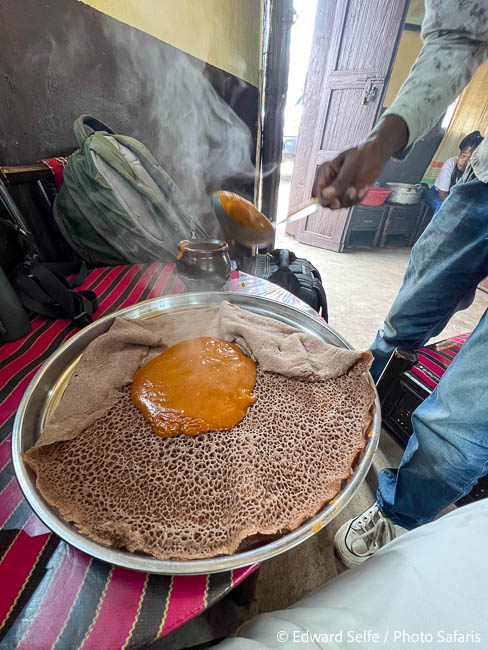
Lunch at just under 4,000m asl was injera and a bean stew….strong, fermented and very filling.
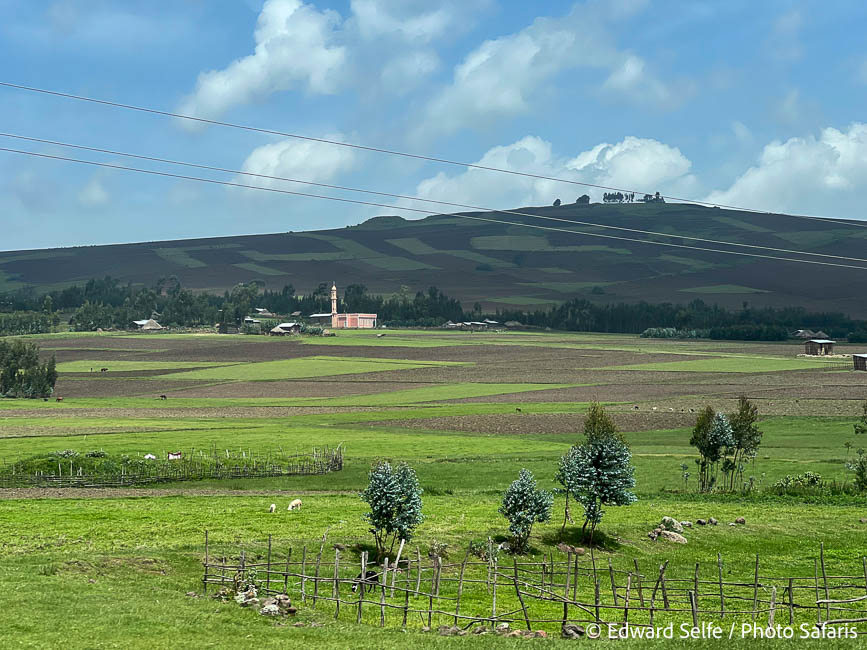
The final stretch of our journey through the arable areas was beautiful, with rolling hillsides that illustrate the wealth that is generated in this part of Ethiopia.
Bale Mountains
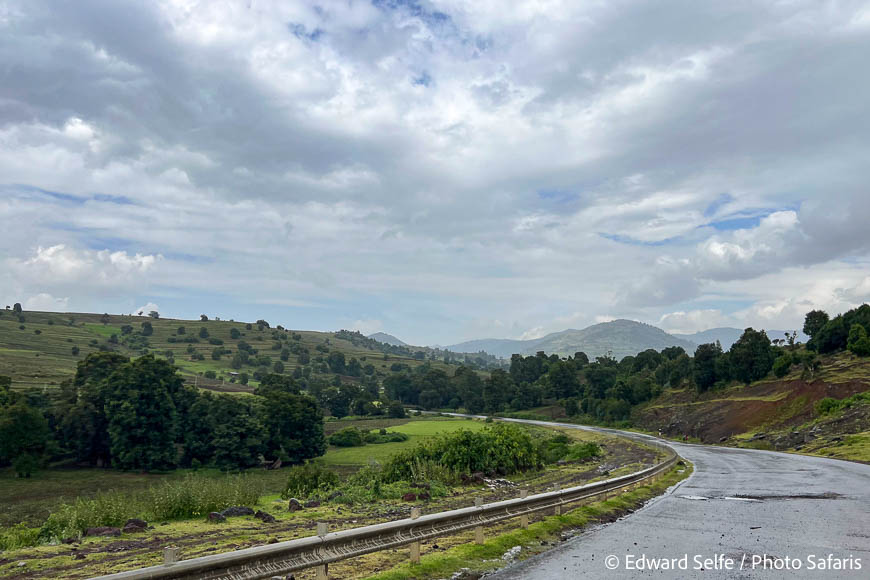
Our next destination was the extreme highlands of Bale Mountains National Park. The national park encompasses a large upland plateau (called the Sanetti Plateau) and the steep hillsides around it. On the northern side, the dominant trees are juniper & hygenia interspersed with rich grassland. The southern side, which was sadly beyond reach on this trip, is permanently wet, cloud forests. Somewhere for another trip!
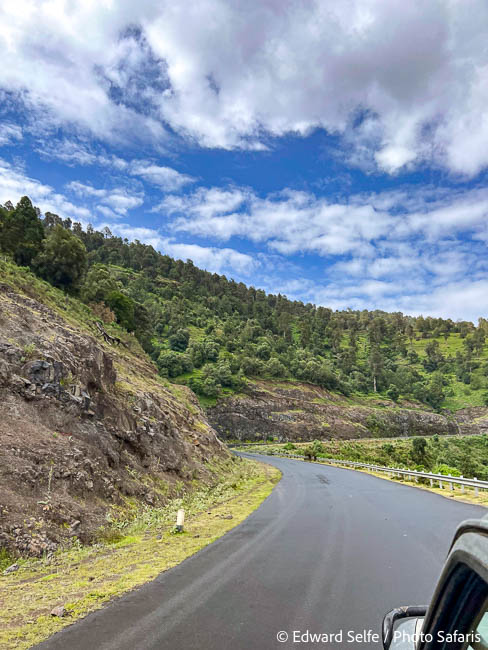
The steep climb up the side of the plateau to Goba where we would stay was breathtaking…
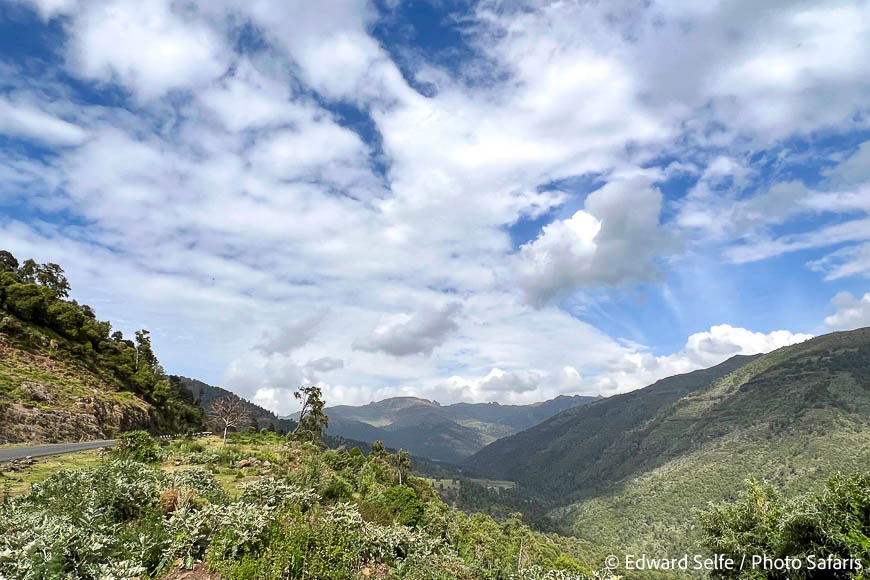
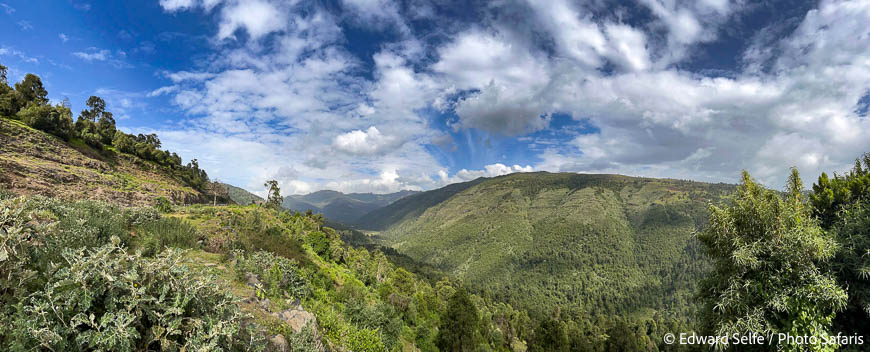
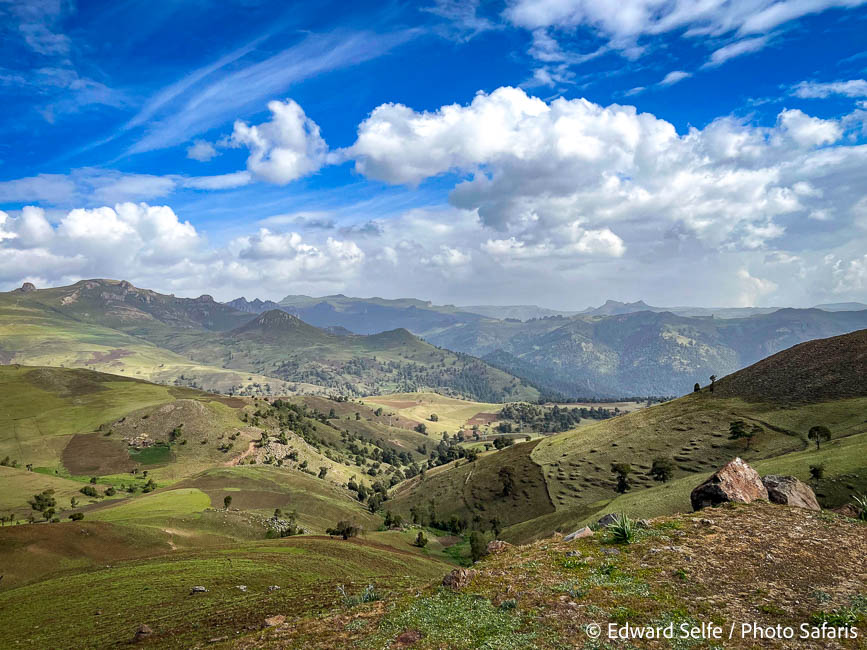
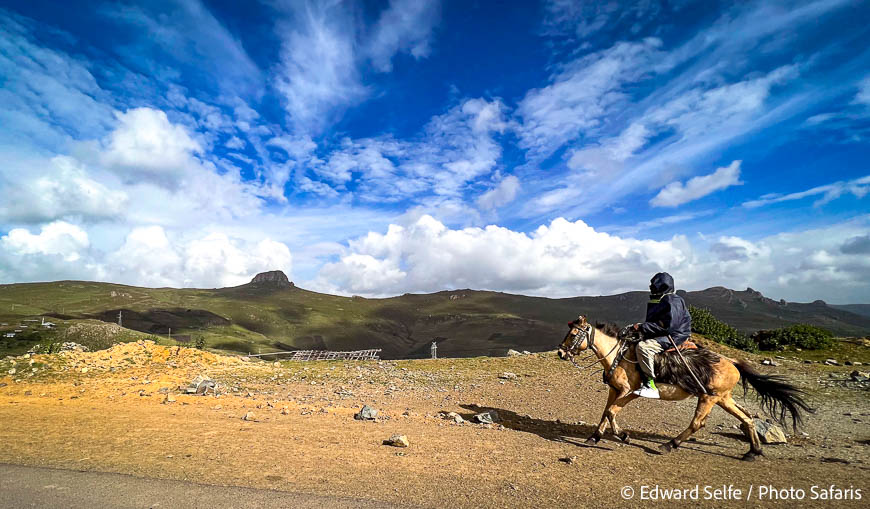
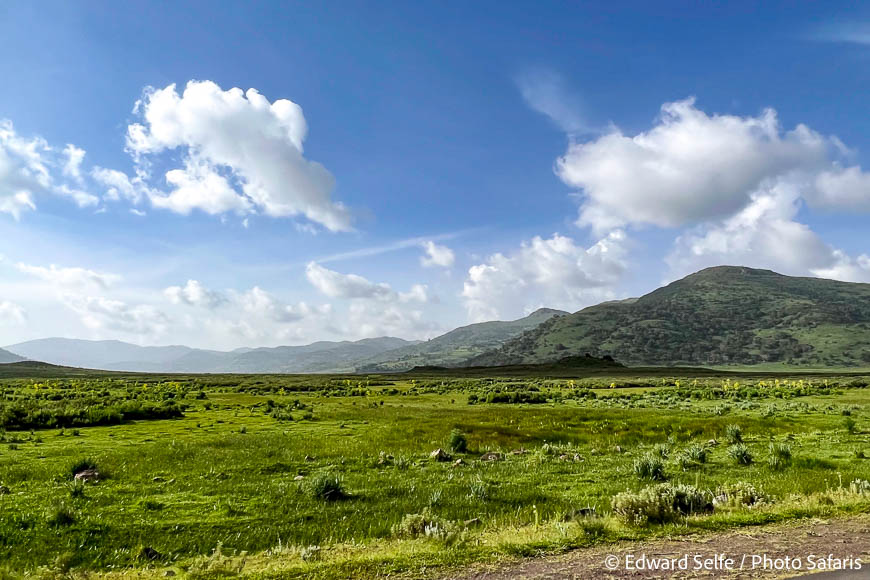
Once we crossed the mountain pass, we descended into the Dinsho Valley, where Mountain Nyala mixed with livestock from the communities. More on this later.
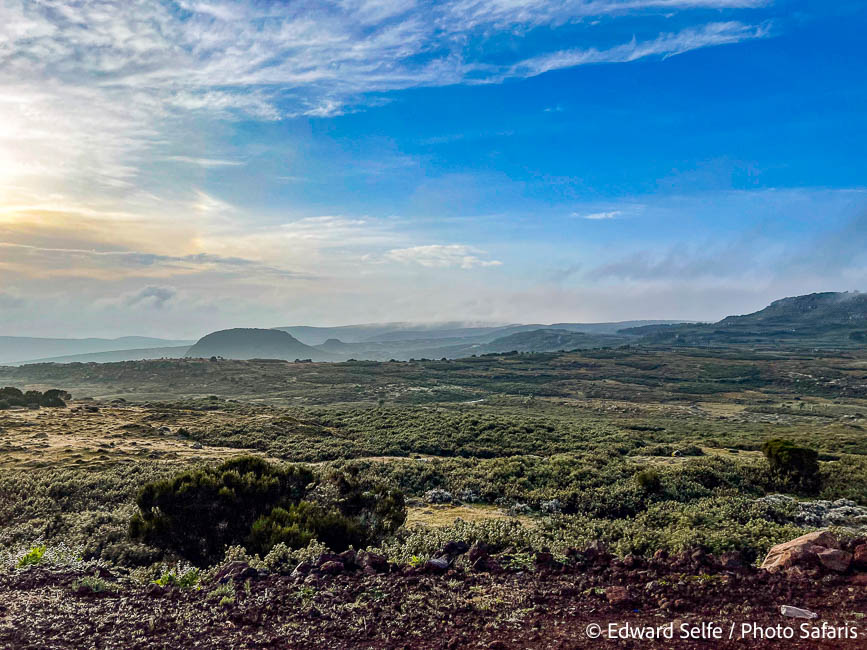
Early the next morning, we started the steep climb out of Goba to the top of the Sanetti Plateau.
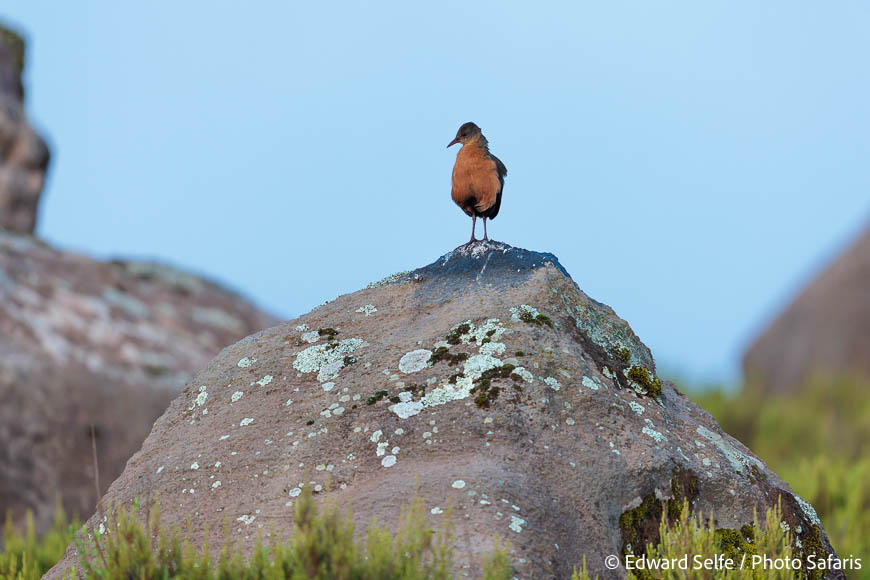
On route, Rouget’s Rail, a most unusual rallid which perches on rocks rather than skulking in the undergrowth, was common on the exposed rocks.
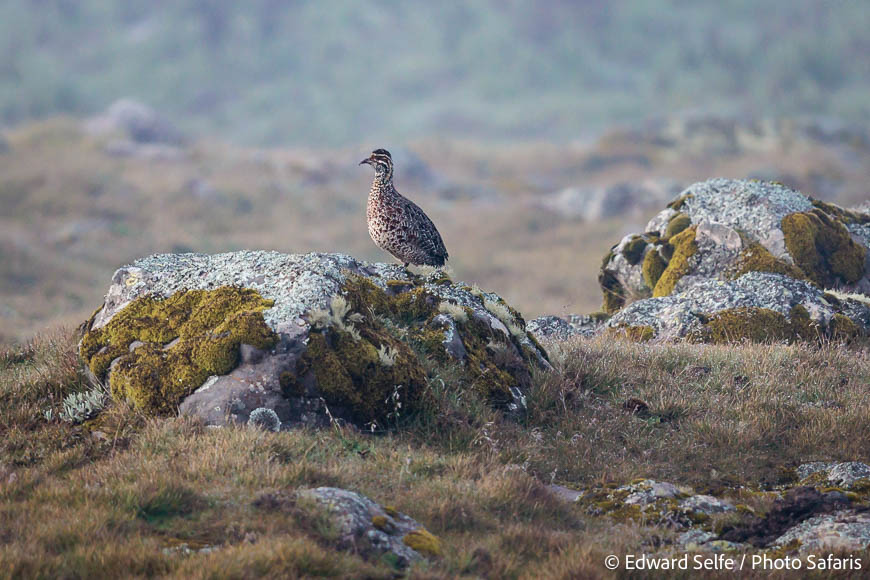
As we crested the edge of the plateau, the rocky grassland gave way to high-altitude moorland, more reminiscent of Scotland. Moorland Francolins are common, but rarely pose like this.
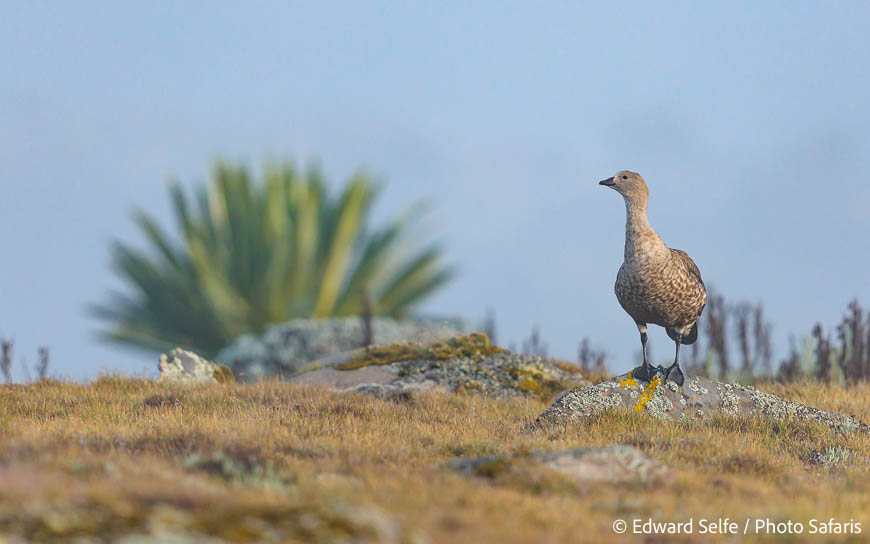
Blue-winged goose, a very range restricted rarity, found only in Ethiopia.
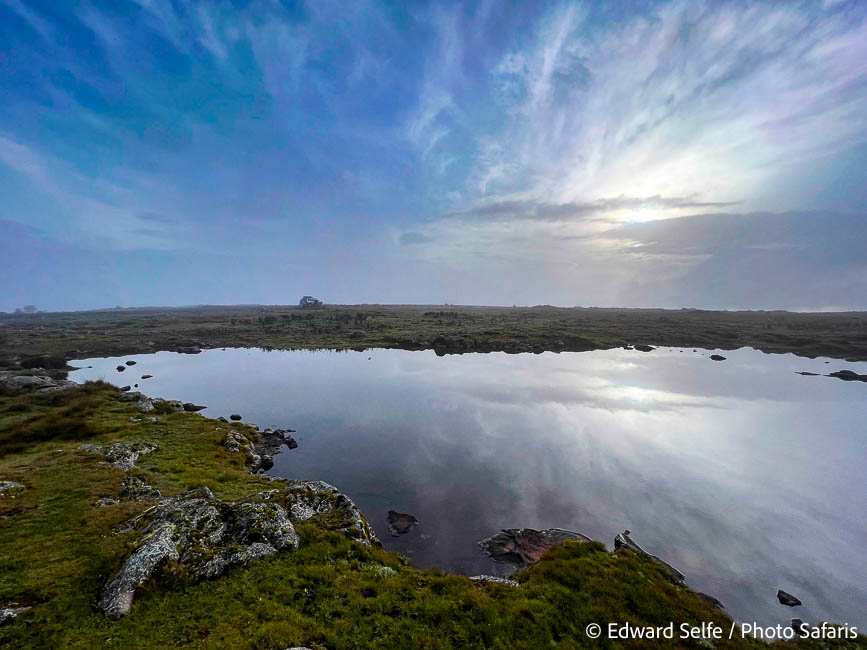
It was cold, windy and absolutely beautiful. I’d been warned that the weather can change at any moment, so we maximised all the available light for photos and sightings. I was hoping to see Ethiopian wolf at some point on the plateau, but knowing that they are usually solitary and the weather was clagging in, I was scanning all the hillsides looking for the rich rufous colour of their coats.
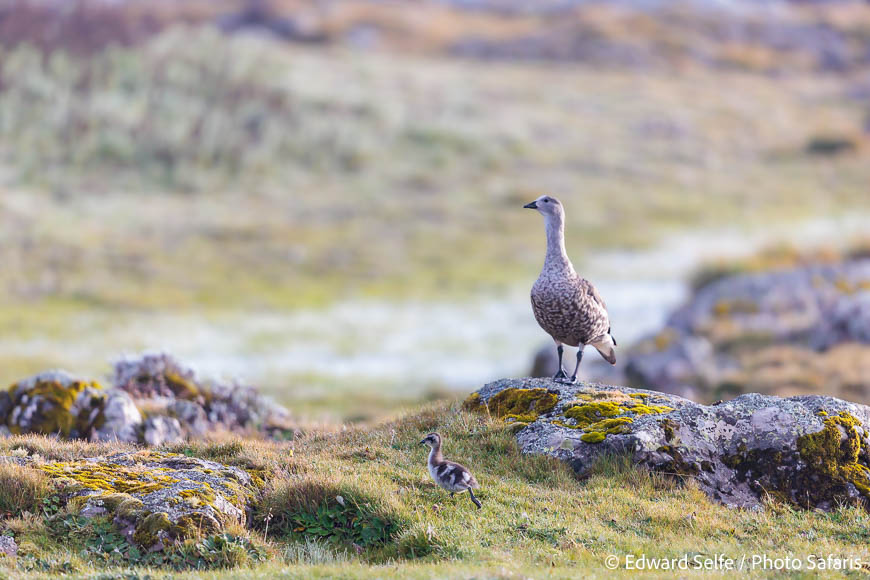
A Blue-winged Goose with gosling.
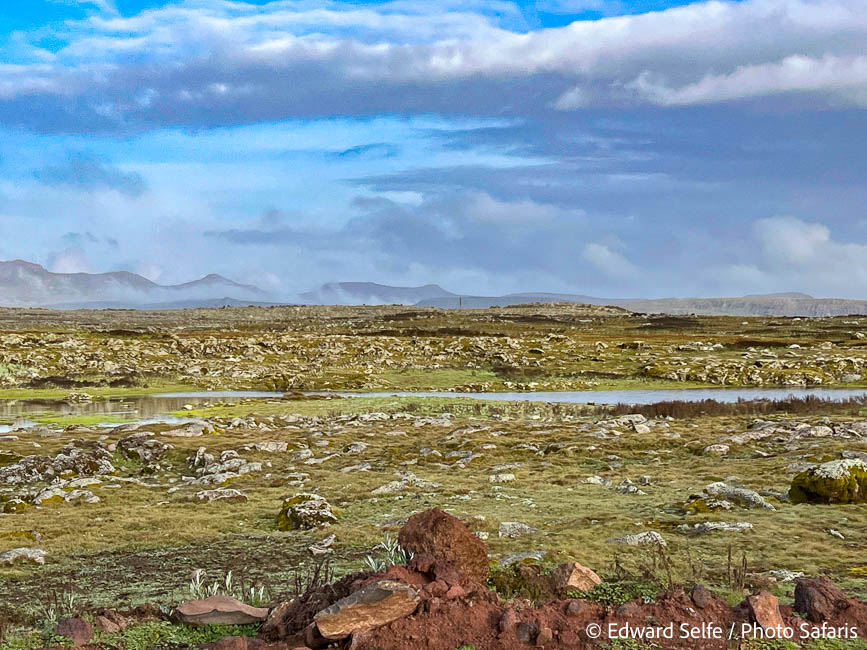
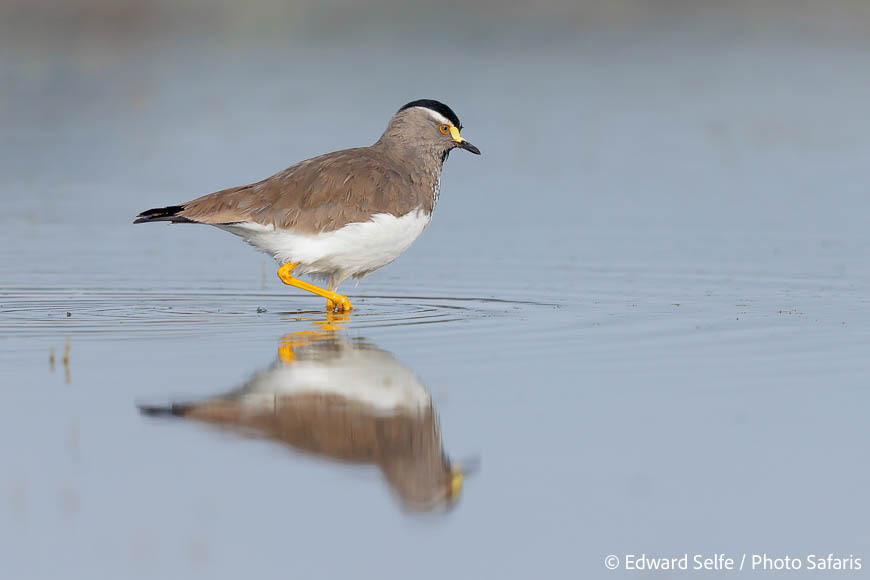
Spot-breasted Lapwing, another Ethiopian special.
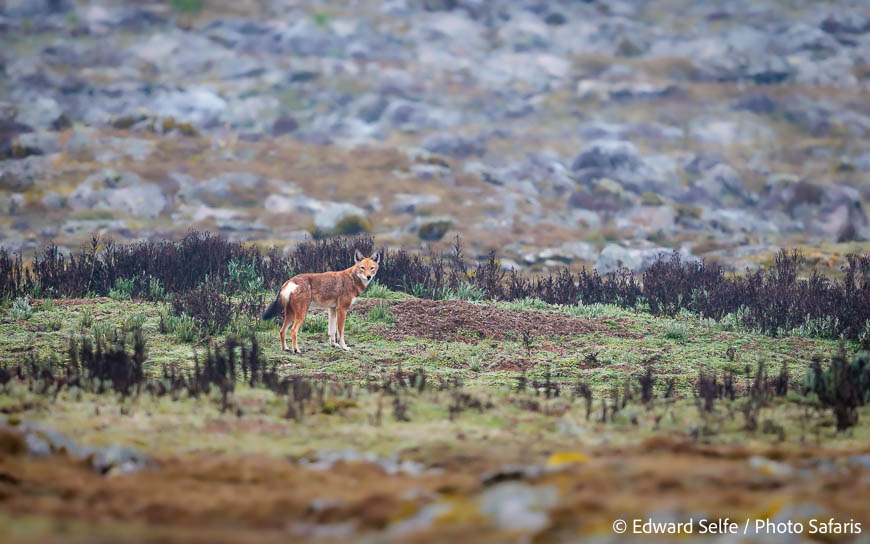
And then, through the mist, a solitary Ethiopian wolf, Africa’s rarest canid, hunting in the soggy moorland. It was calling to its pack with long mournful howls, not dissimilar to wild dogs’ gathering calls.
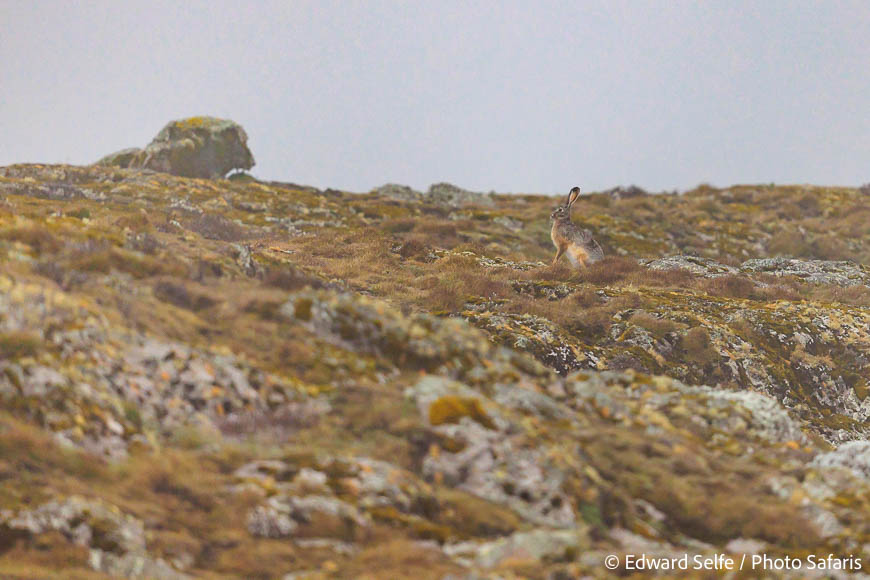
I tried to follow the wolf, but the roads didn’t follow its path, so we had to wave goodbye as it melted into the landscape. Nearby Starks’s hares breathed a sigh of relief despite rarely featuring on the wolves’ menu.
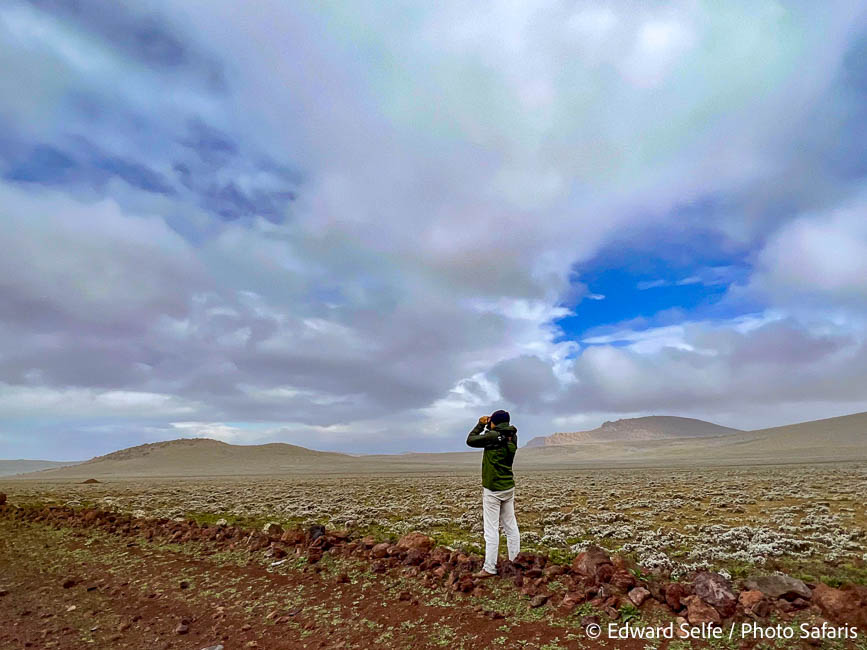
Then it started to rain… Gently at first, and then heavy, with dense cloud and cold, biting winds!
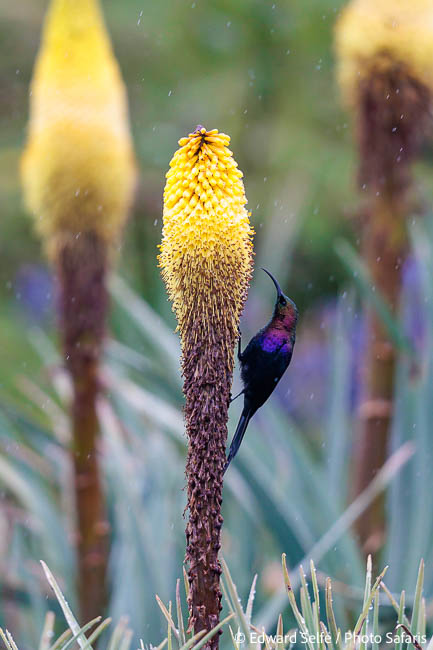
On the slope back down into Goba, we stopped when visibility allowed to shoot images of the forests of Kniphofia flowers with attendant Tacazze Sunbirds.
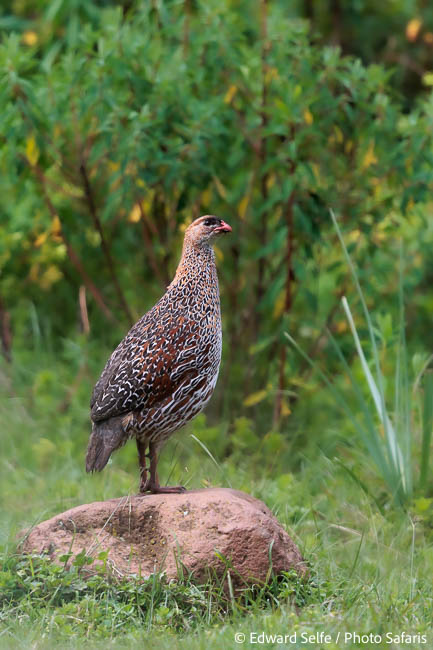
Back in ‘town’ the air was clearer, and we continued looking for wildlife including these Chestnut-naped Spurfowl….
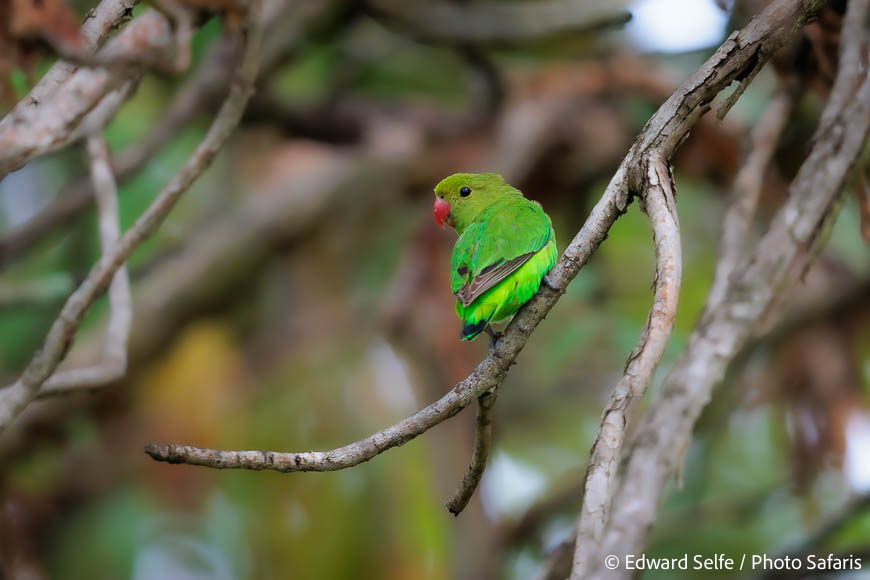
…Black-winged Lovebirds…
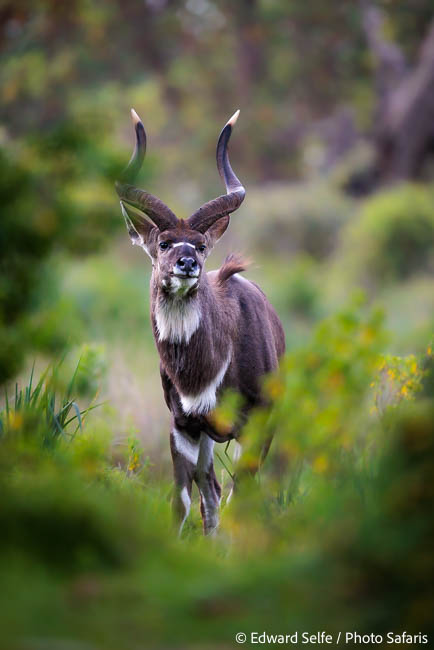
…and finally, Mountain Nyala, one of my main targets for the trip. These are cow-sized antelope with long legs, similar in size and profile to a Greater Kudu, with spectacular horns and kind faces. Like all spiral-horned antelope, they tend to be shy in nature but the herds around the Park HQ at Dinsho are very tolerant of people.
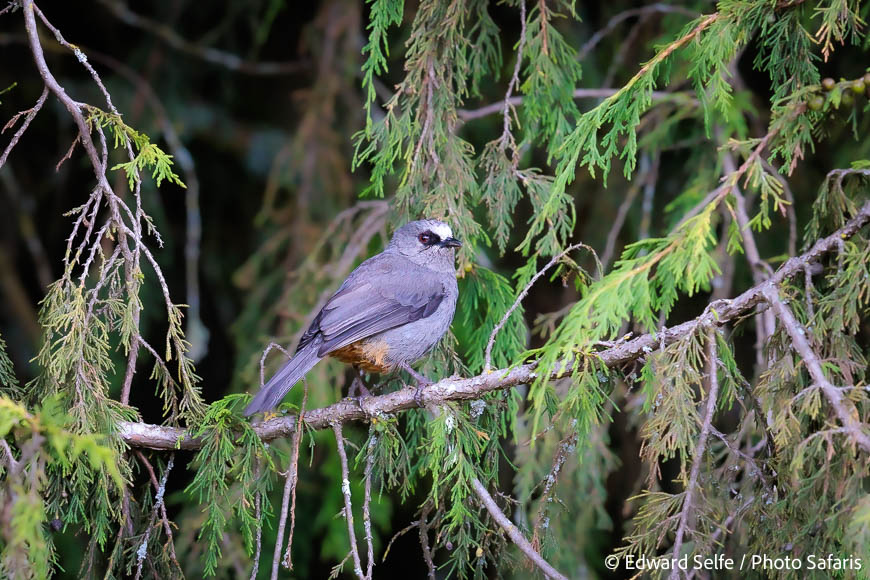
Abyssinian Catbird giving a rare low-level appearance.
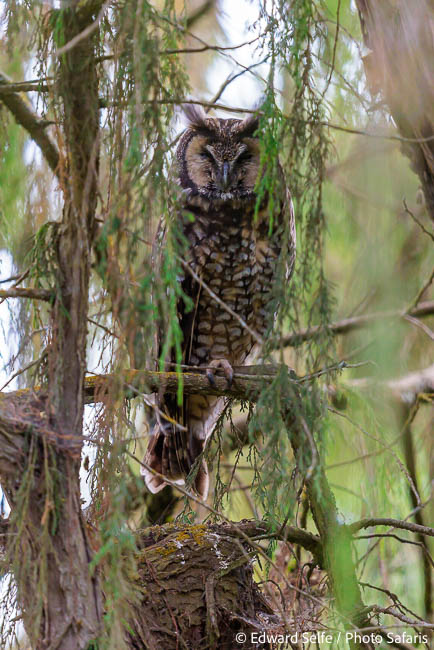
One of the retired Park rangers made a tidy living acting as a scout for the rare Abyssinian Owl. Having found one in the grounds of the Park HQ, he searches for it each morning and leads groups of naturalists to see it. It protection is increased by his daily wanderings, and I was very happy to see it, but I prefer the search and find approach to wildlife rather than being led to a pre-located sighting.
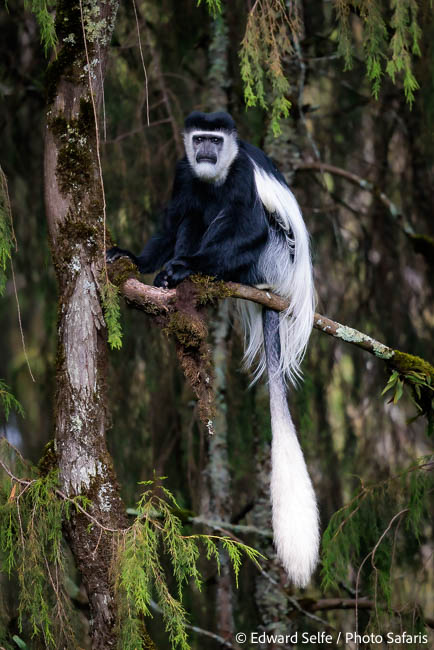
Black and white Colobus.
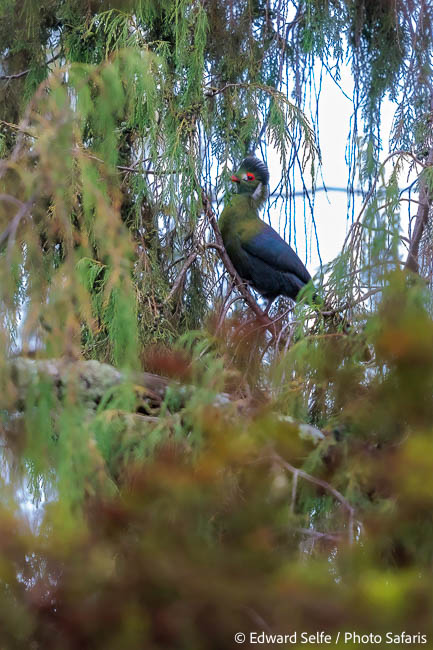
White-cheeked Turaco against bright light, but well-handled by the Canon EOS R5 and the expose-to-the-right technique.
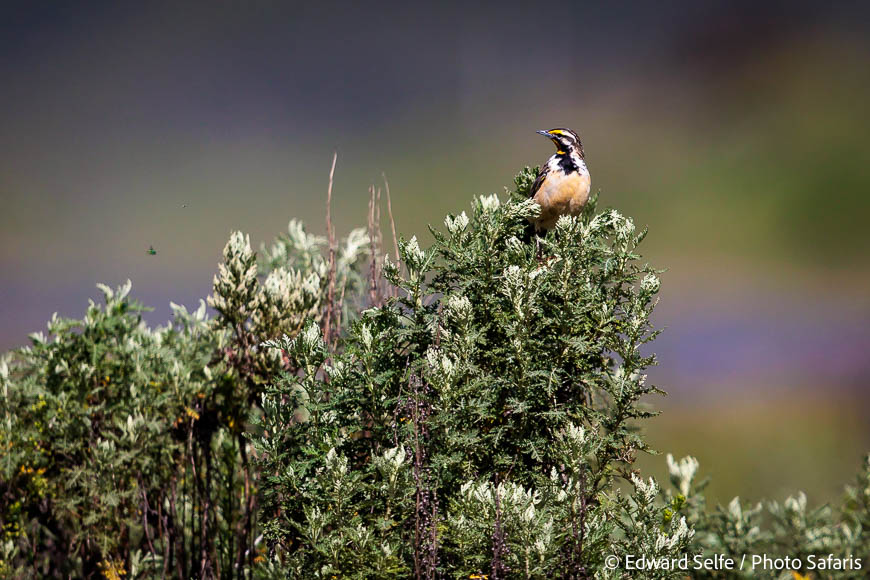
The final specials from the mountains area were the Abyssinian Longclaw….
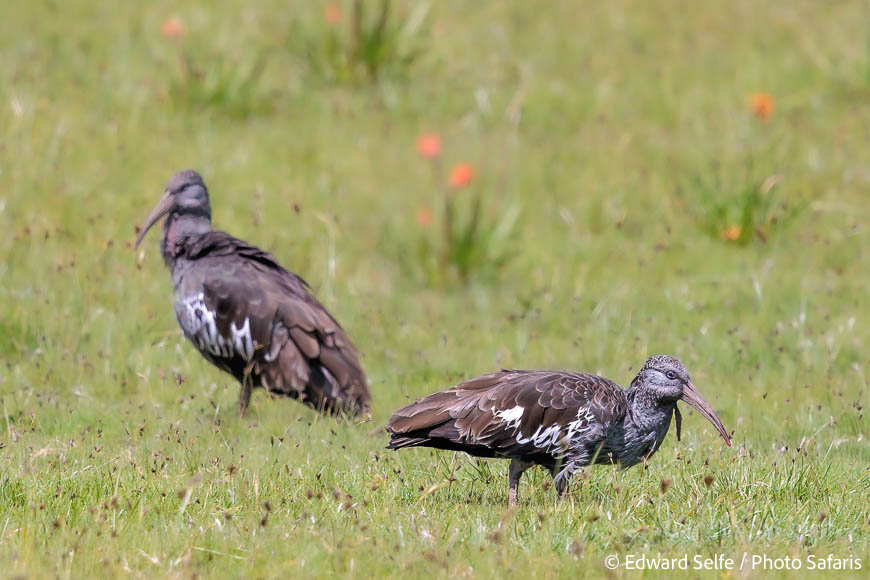
…and African Wattled Ibis.
Lake Langano, African Rift Valley
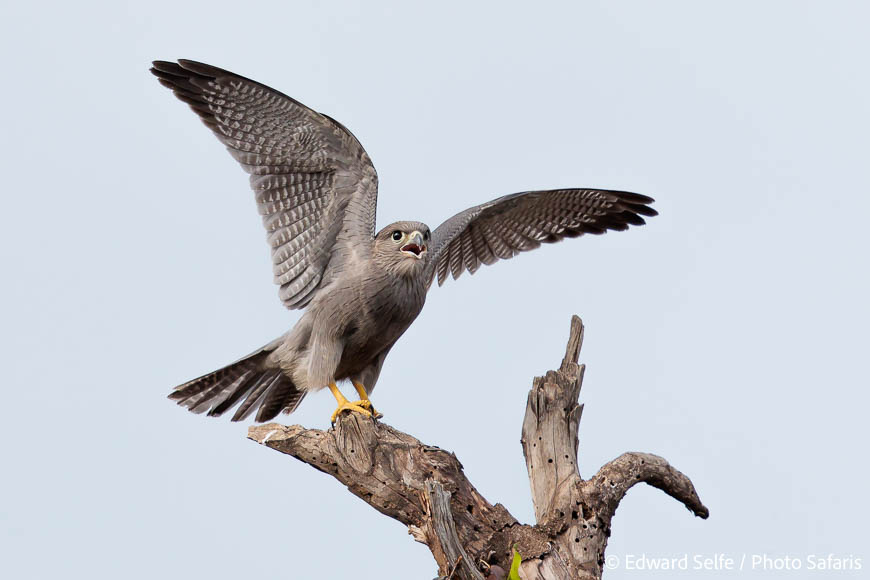
As we left the tarmac road that connected Hawassa and Addis, I could feel that this area was rich in life. A young Grey Kestrel flared his wings as we passed and the flew off calling to its parent.
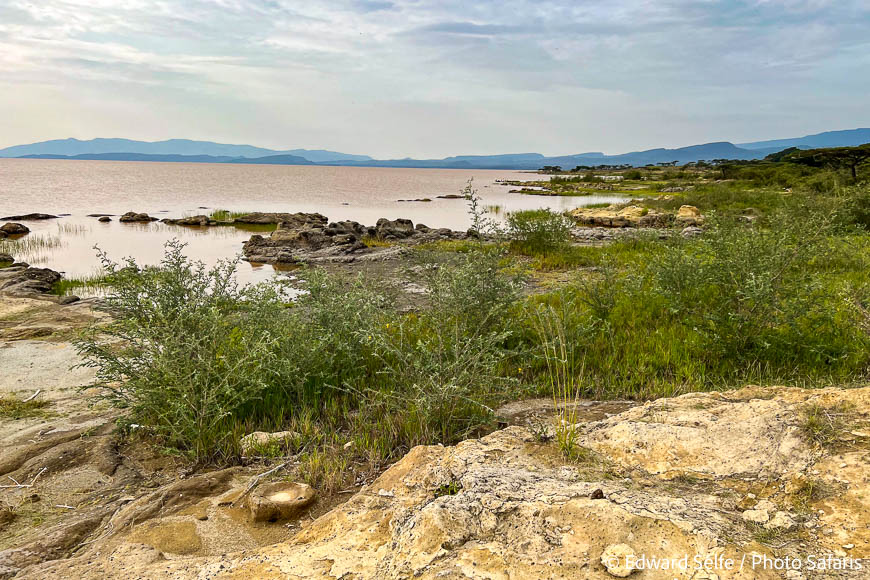
The shores of Lake Langano, stained red by the sediment content in the water.
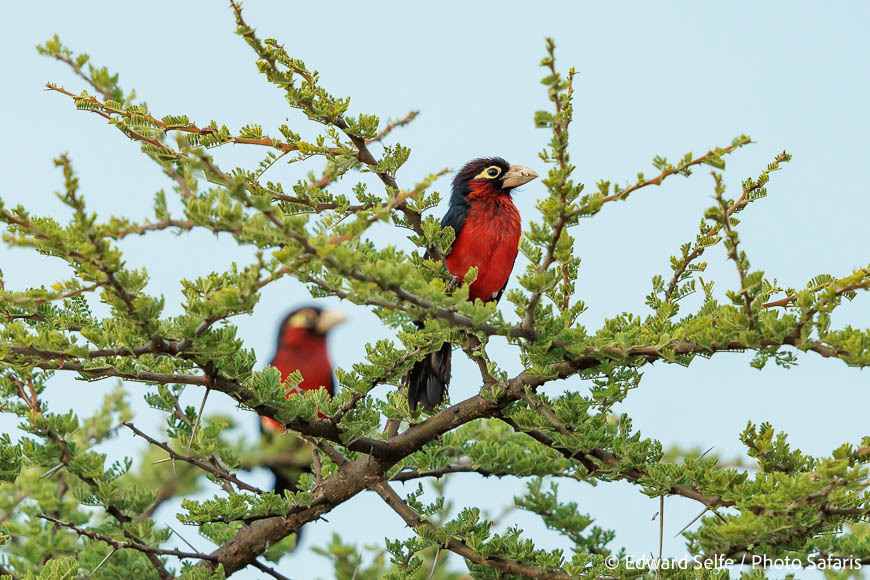
Double-toothed Barbet pair resting on top of one of the thorn trees on the banks of the lake.
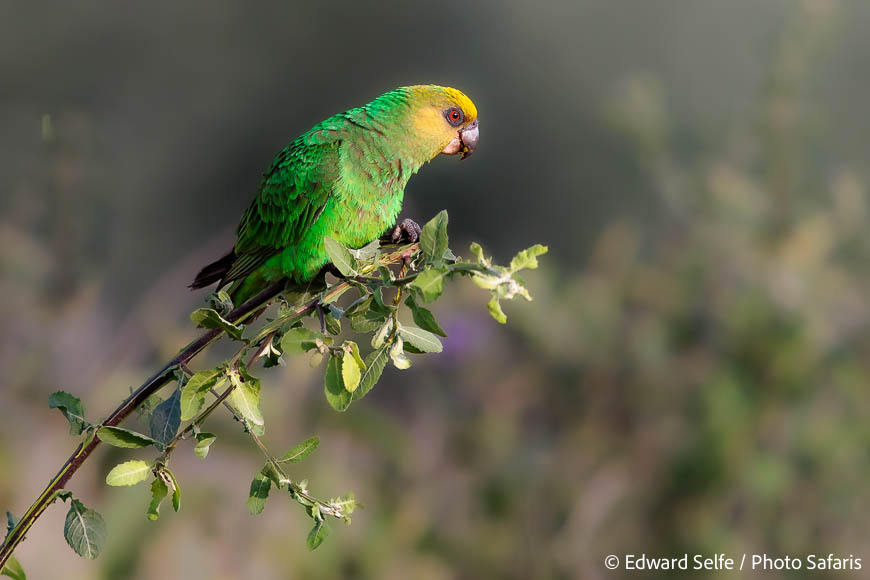
Yellow-fronted Parrots were numerous each morning in front of the lodge; they descend from the forest to feed on the seeds of the shrubs close to the water…
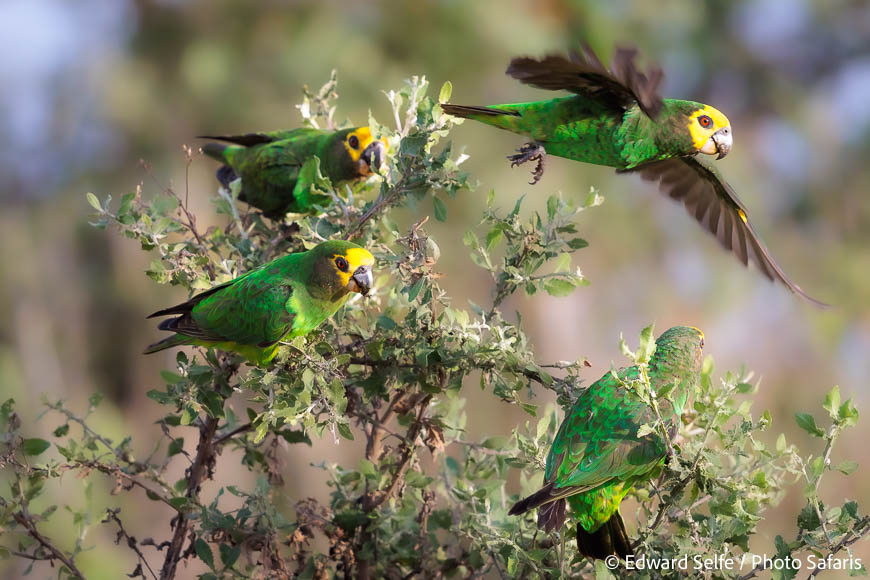
…at one point there were easily in excess of 200 birds.
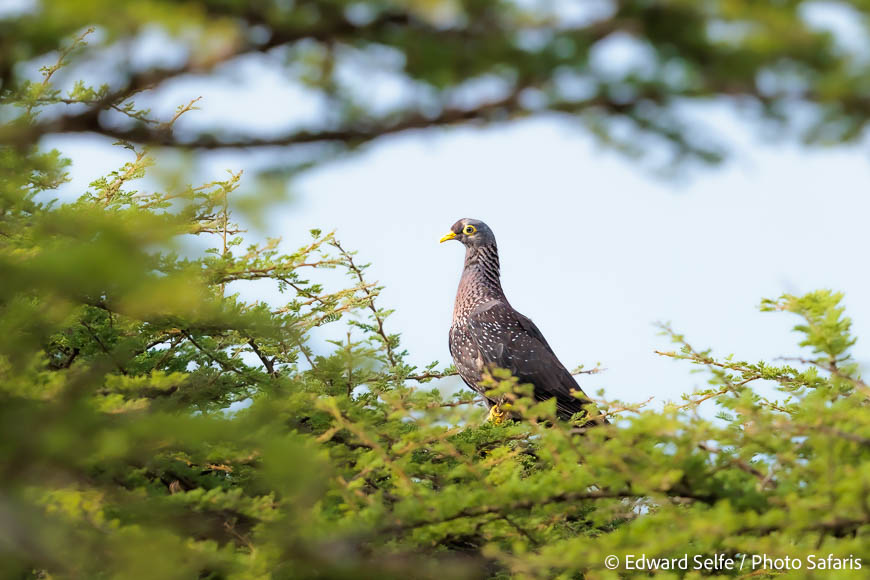
African Olive Pigeons, more usually associated with high-altitude forests were numerous in the acacia woodlands…
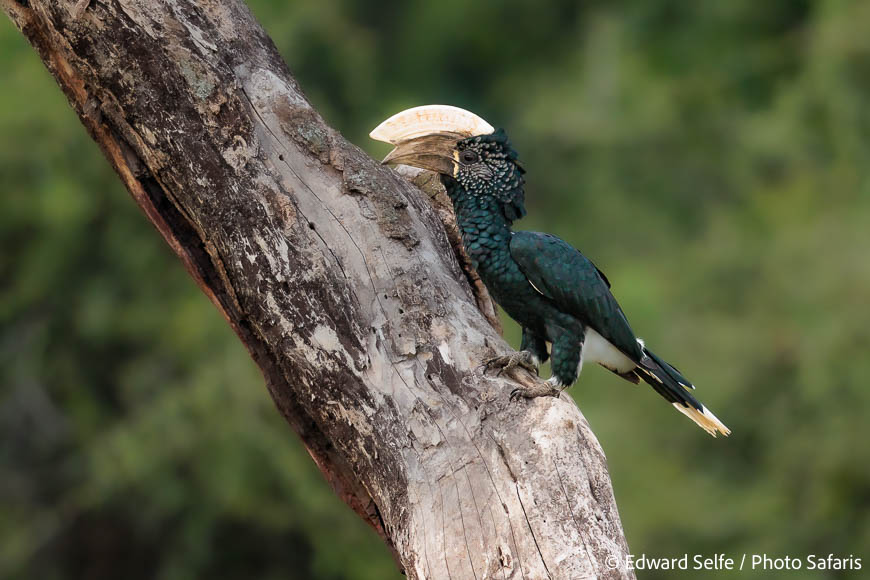
..and Silvery-cheeked Hornbills similarly surprised me since is associated them with plateaux.
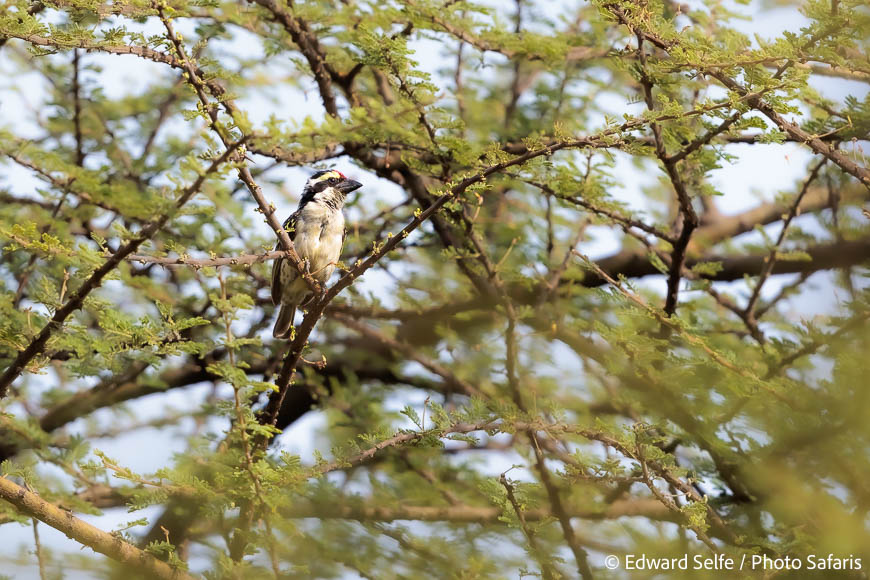
Red-fronted Barbet…
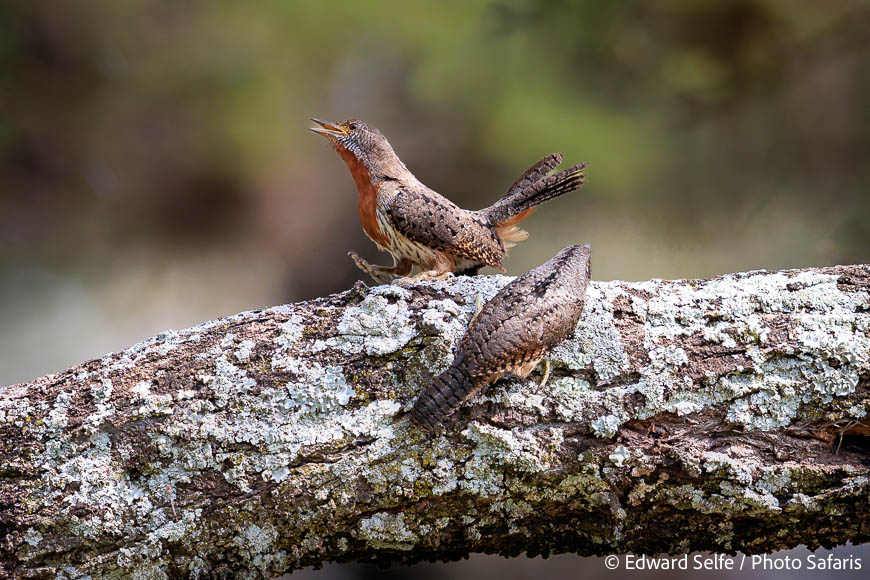
Red-throated Wrynecks displaying..
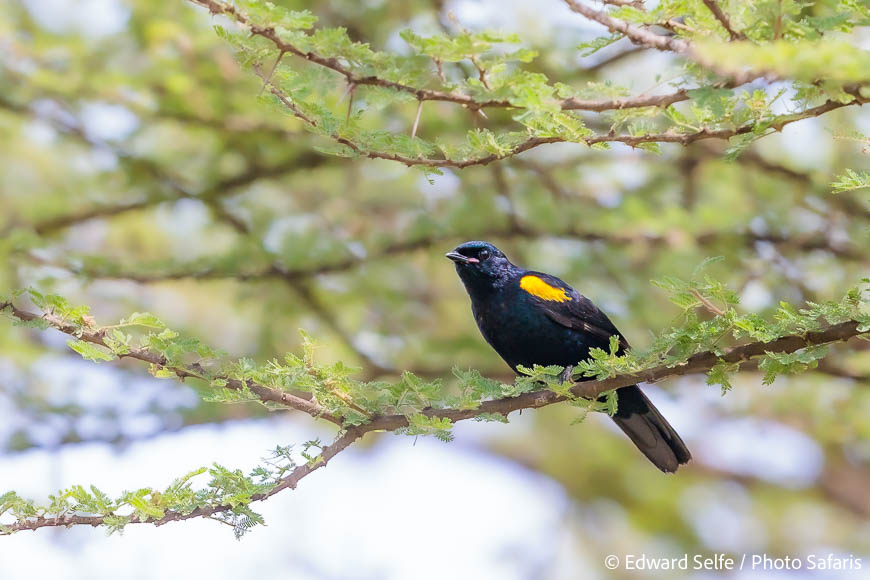
..and an unusual Red-shouldered Cuckoo-shrike with a yellow shoulder.
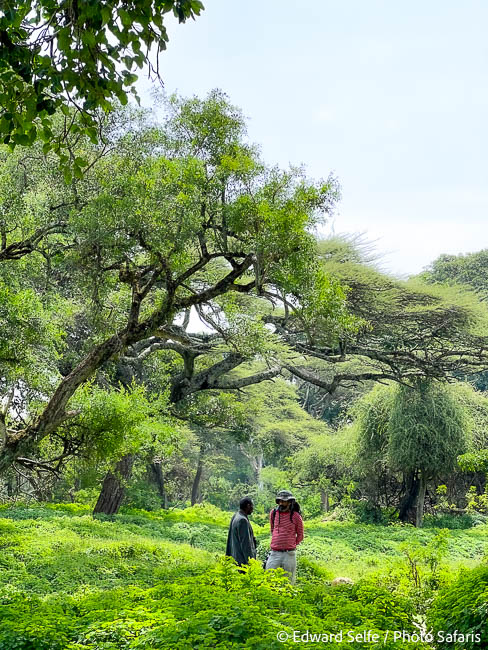
Walking in the forest with my guides, Merid from Birding Abyssinia Tours.
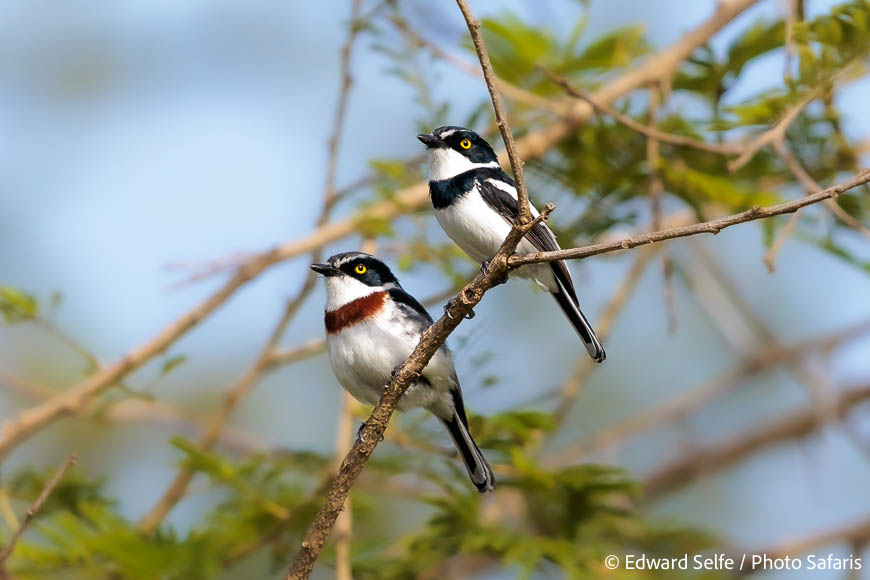
Western Black-headed Batis pair sitting quietly in the evening light.
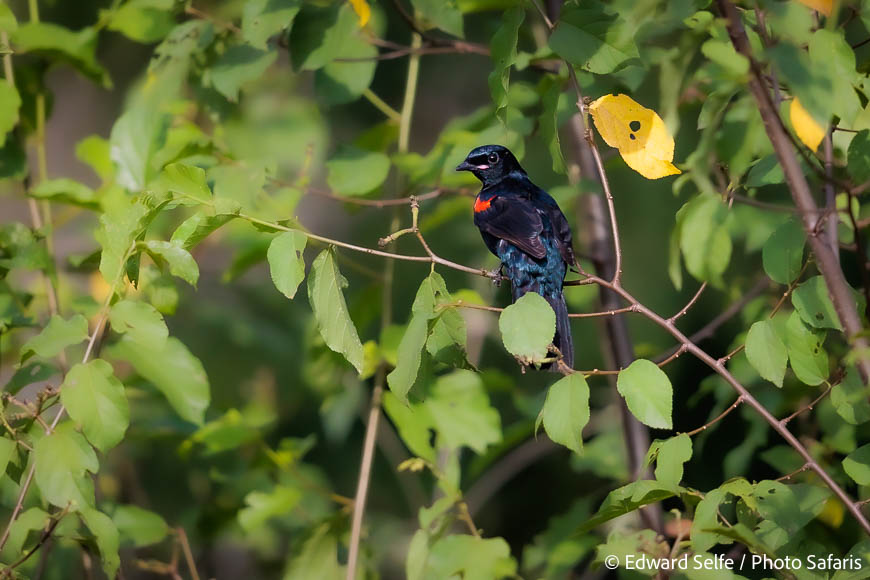
Red-shouldered Cuckoo-shrike showing its iridescent rump.
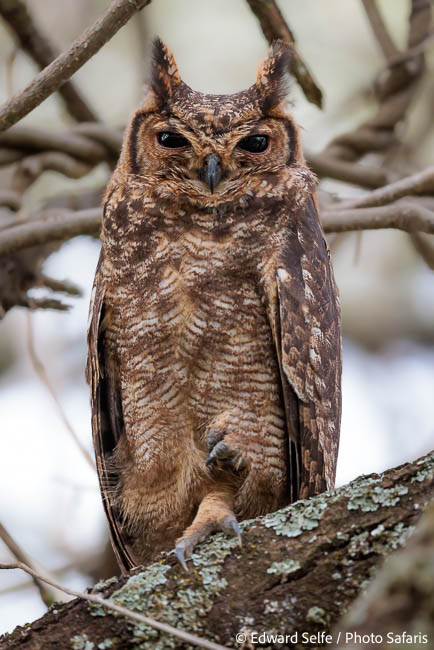
Grey-ish Eagle Owl which lives in a tree next to the bar at Bishangari Lodge on Lake Langano.
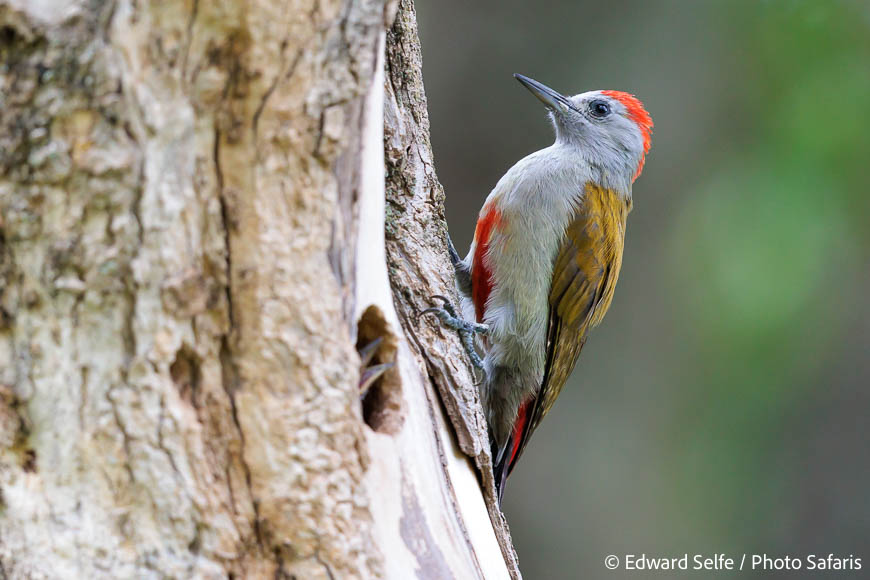
On our final morning, I located a Mountain Grey Woodpecker which appeared to be searching for a nesting site….
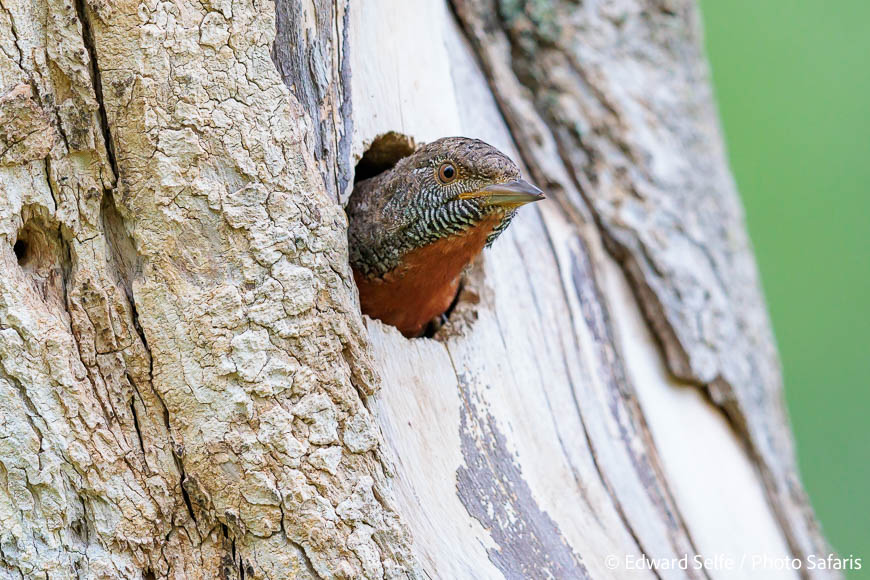
..but it found one occupied already by a Red-throated Wryneck.
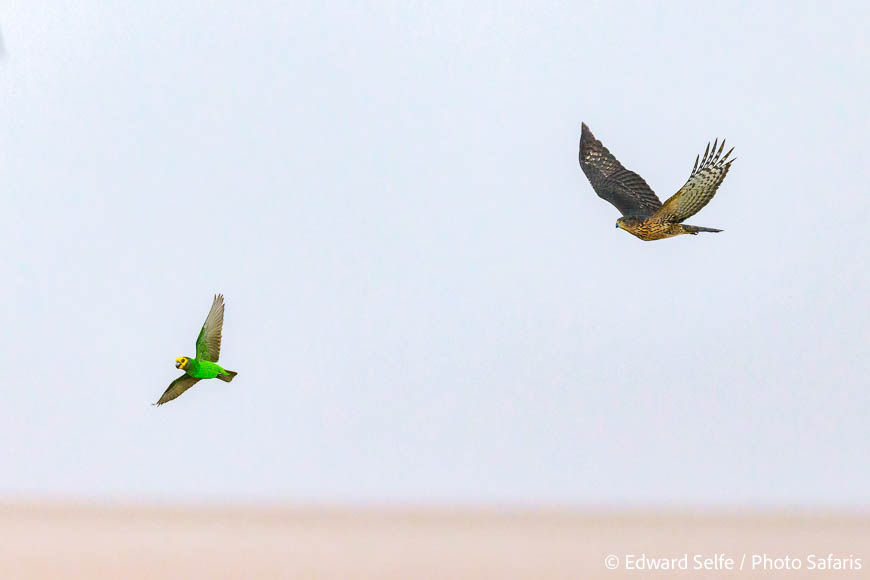
And, just before it started to rain heavily again, a juvenile Black Sparrowhawk tore through the landscape in pursuit of the Yellow-fronted Parrots…! As usual, the Canon R5’s AF tracking system performed well even in the flat light and drizzle!
Ethiopia is a huge country of over 1 million square kilometres, with a population of more than 100 million. I had been in the country just a week, and barely scratched the surface. Looking at the map at the top of this page, it’s clear that there is 4-6 weeks of travelling opportunities in this beautiful country. The wildlife is spectacular (sadly in small islands of wildlife separated by human activities) and there is significant ancient culture which I didn’t include in this itinerary. It’s a challenging country to travel around, and I would not attempt it without an experienced guide such as Merid to navigate the road-blocks, hustle and bustle and irregularities of the place. But it’s rewarding and I’d love to return.

